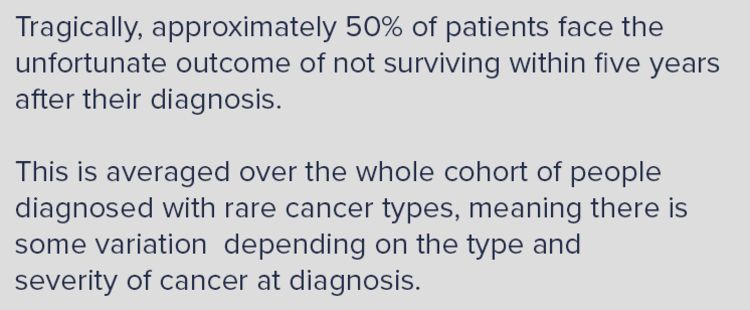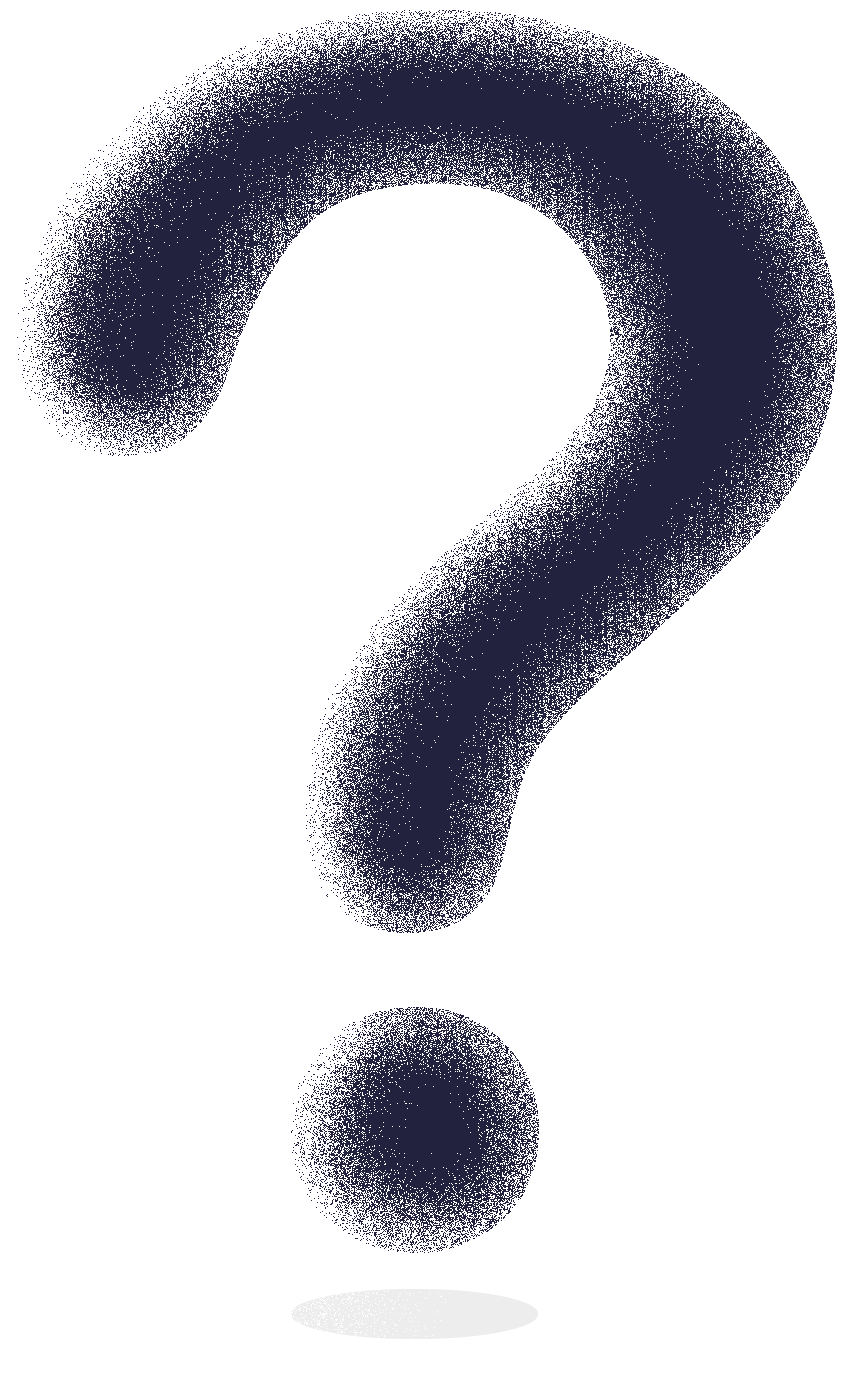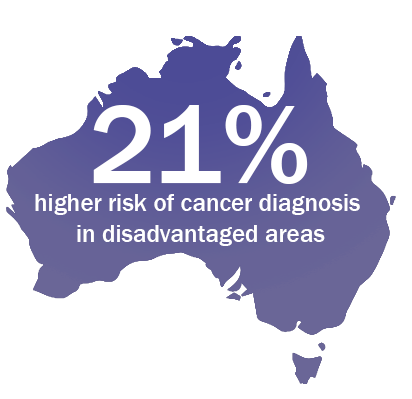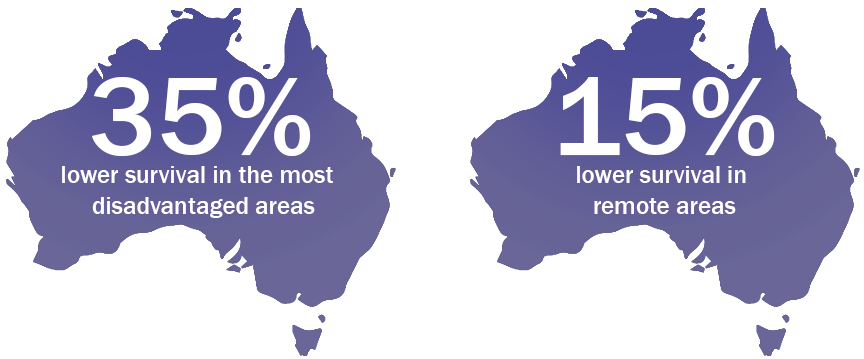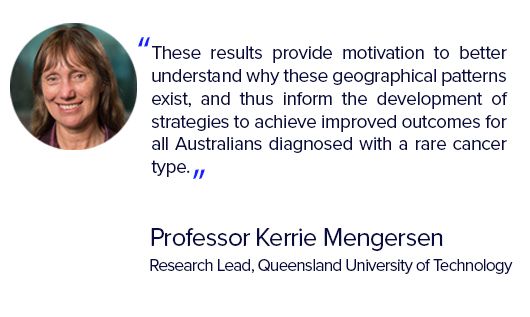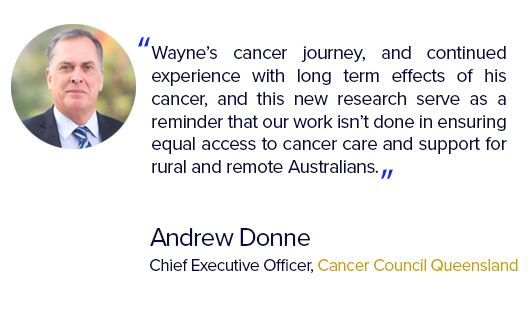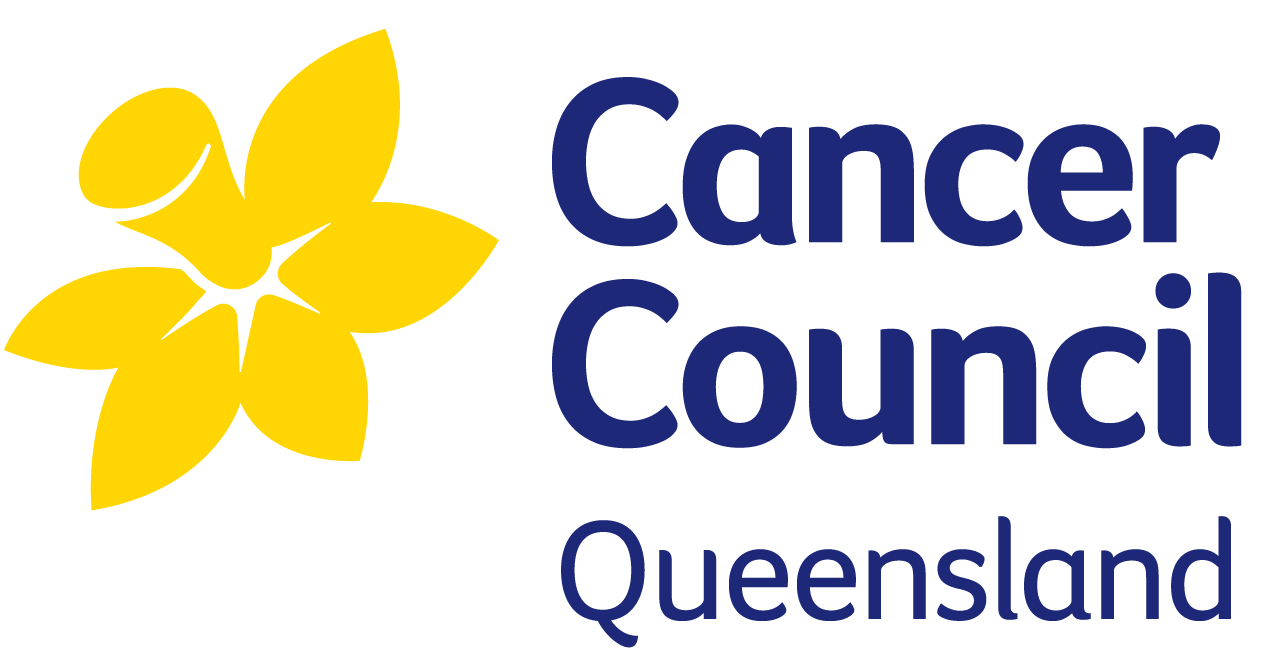THE IMPACT OF RARE CANCERS
How location influences diagnosis and survival rates of rare cancers in Australia?
Rare cancers significantly affect the Australian population. Cancer Council Researchers, collaborated with experts from the Queensland University of Technology and the Western Australia Cancer Registry, to gather data from eight different cancer registries across Australia, between 2007 and 2016. The findings, published in International Journal of Cancer, reveal alarming statistics on the prevalence of rare cancers and their geographical distribution across the country.
A project by:
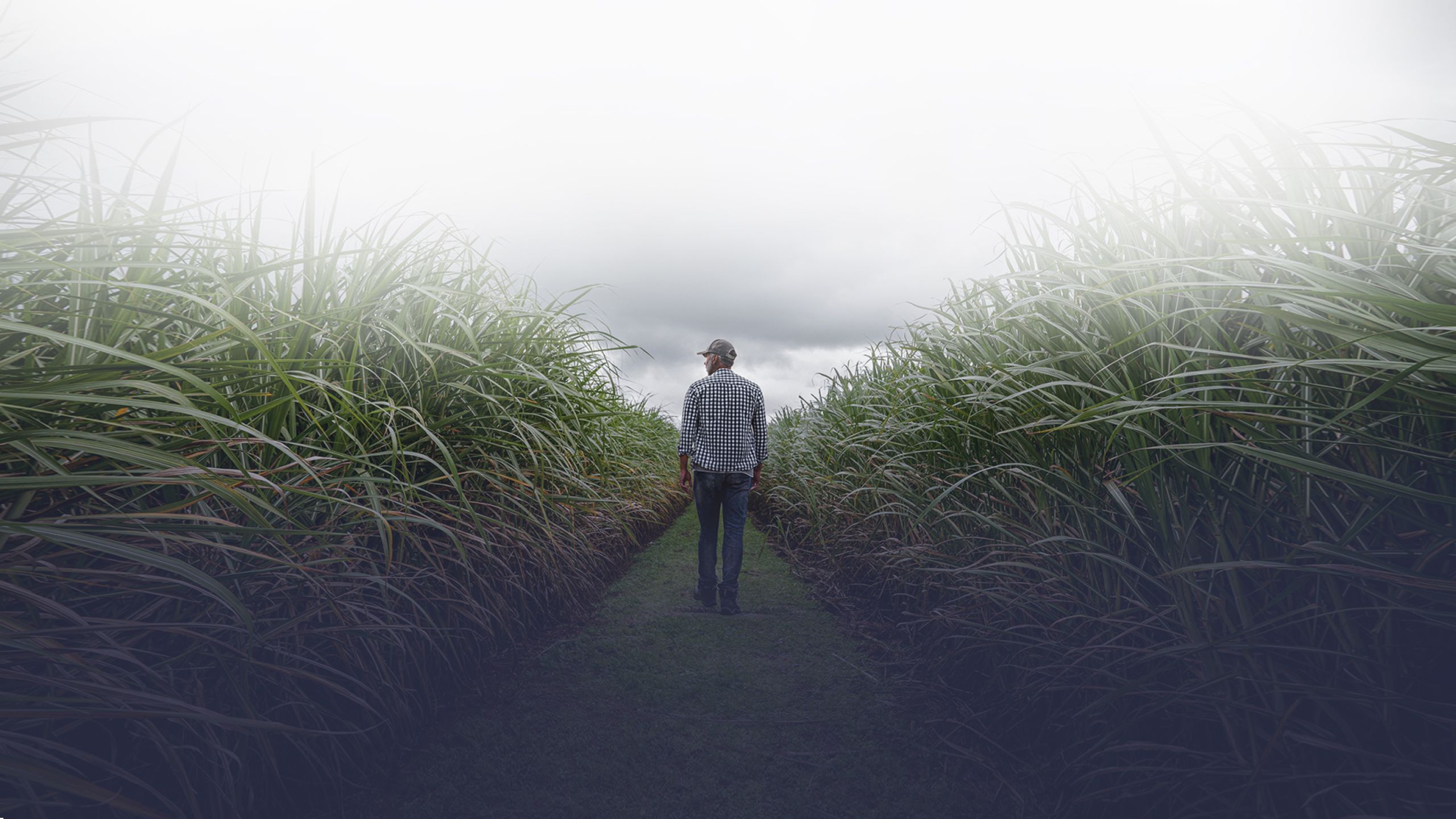
The visual explainer is currently available only on desktop. A mobile version will be released soon.


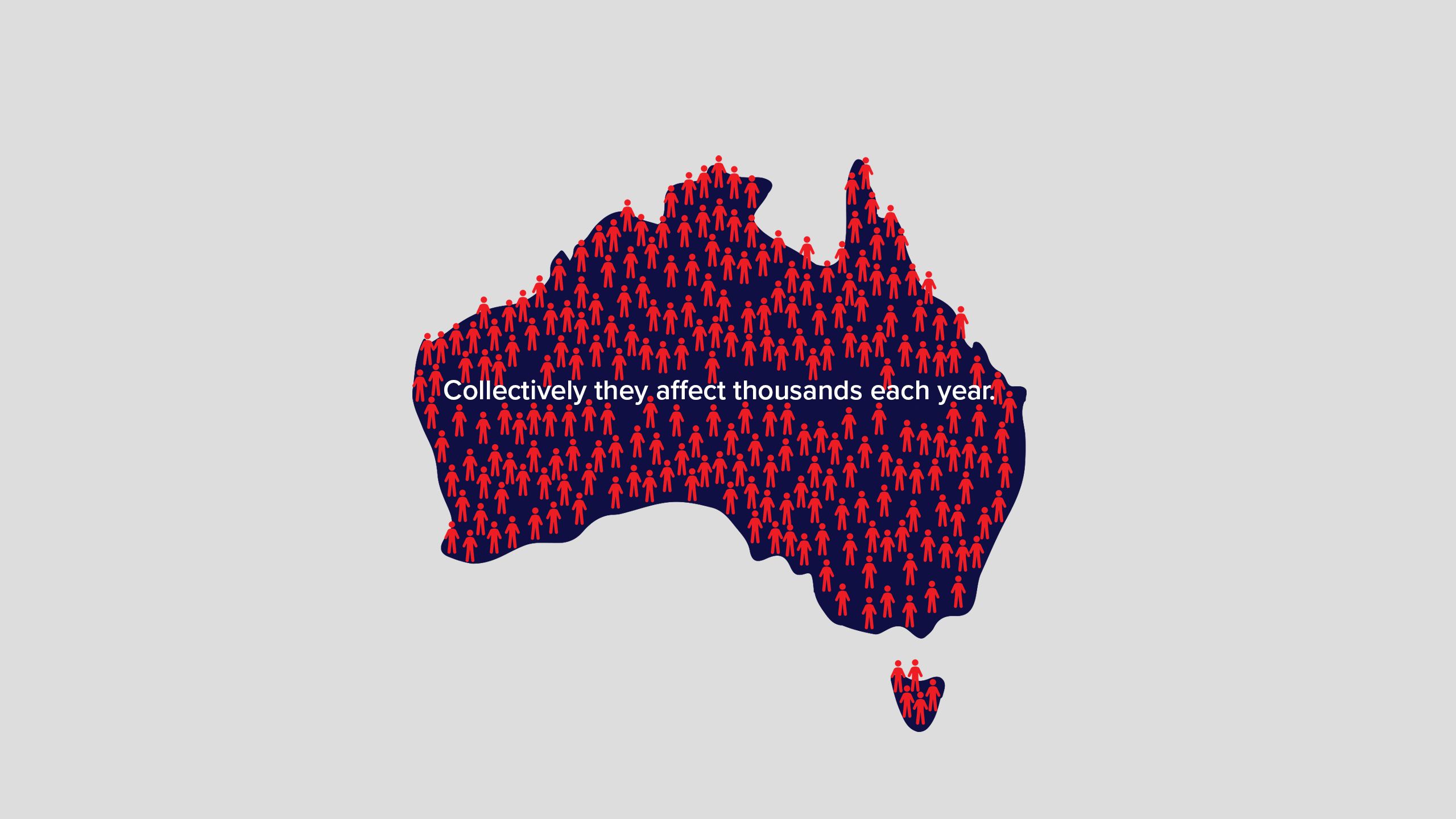

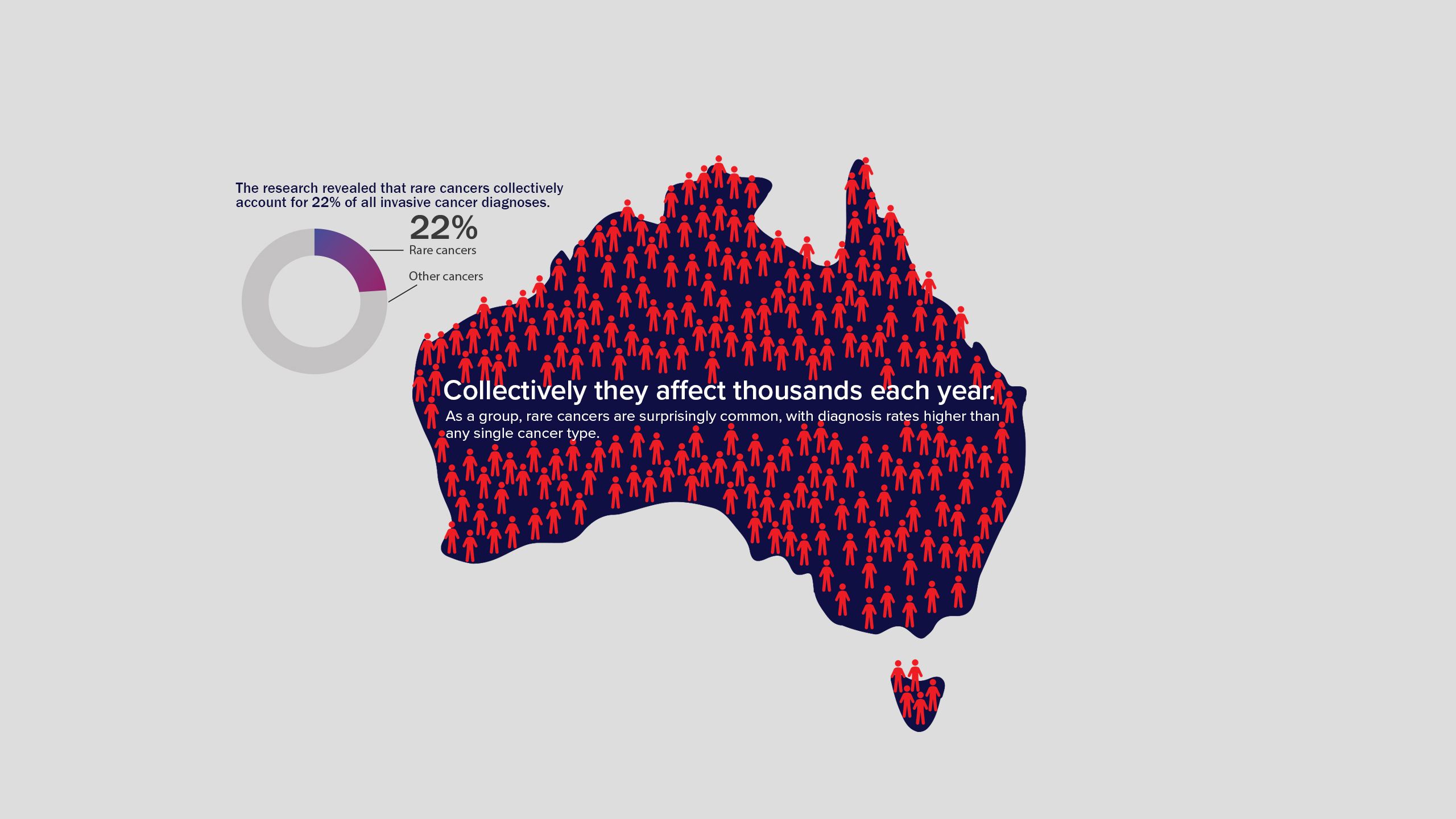
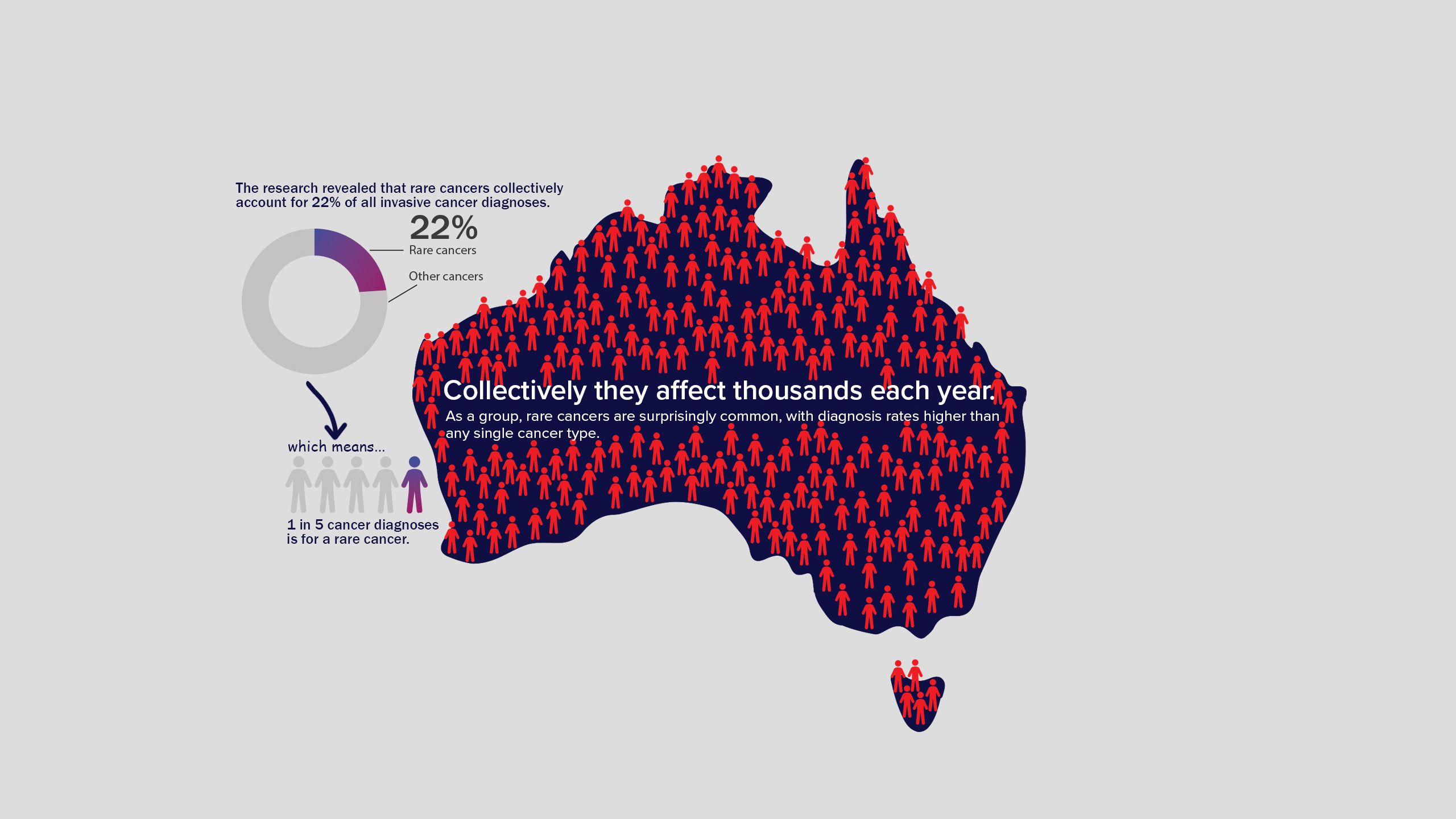
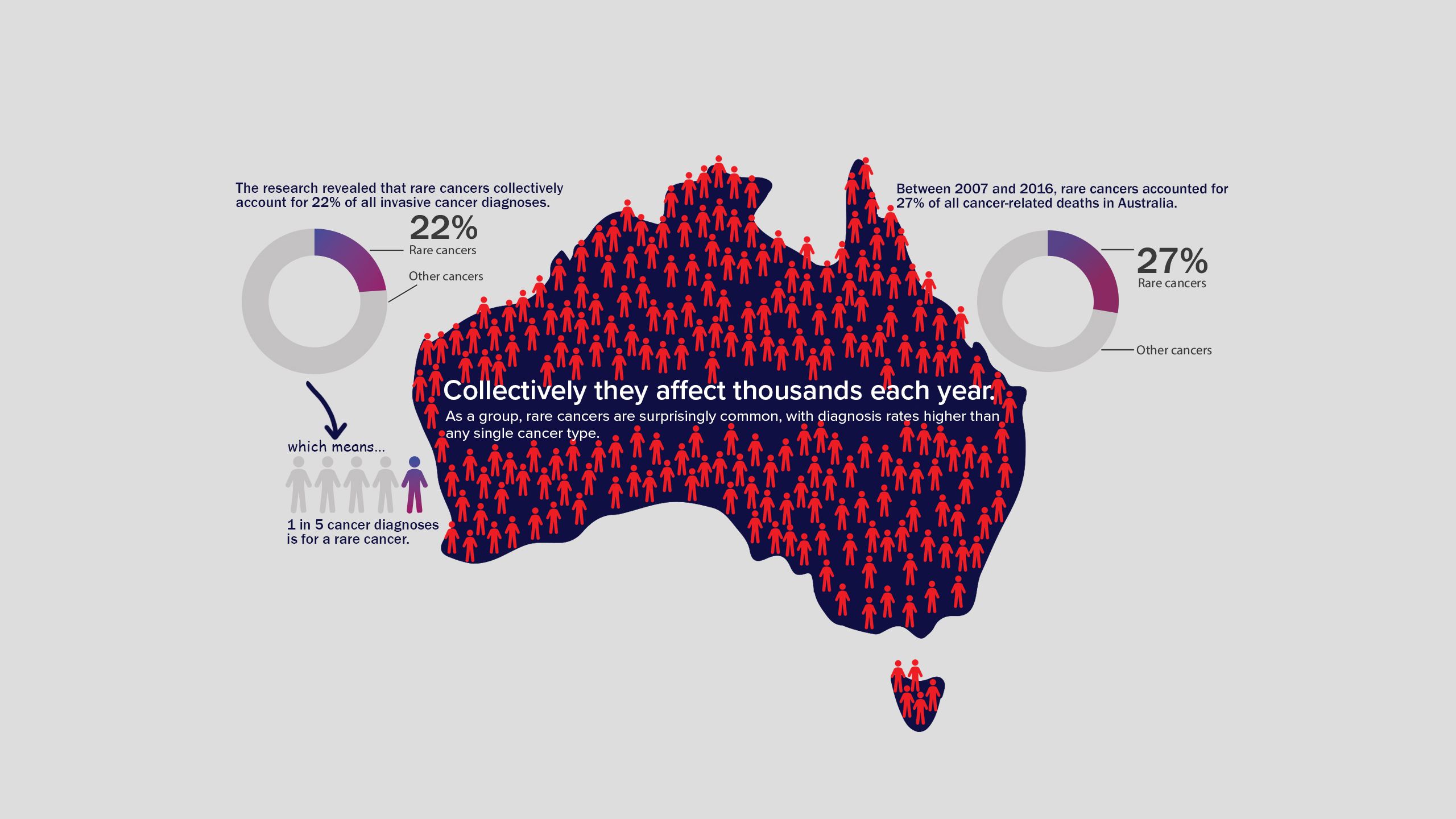
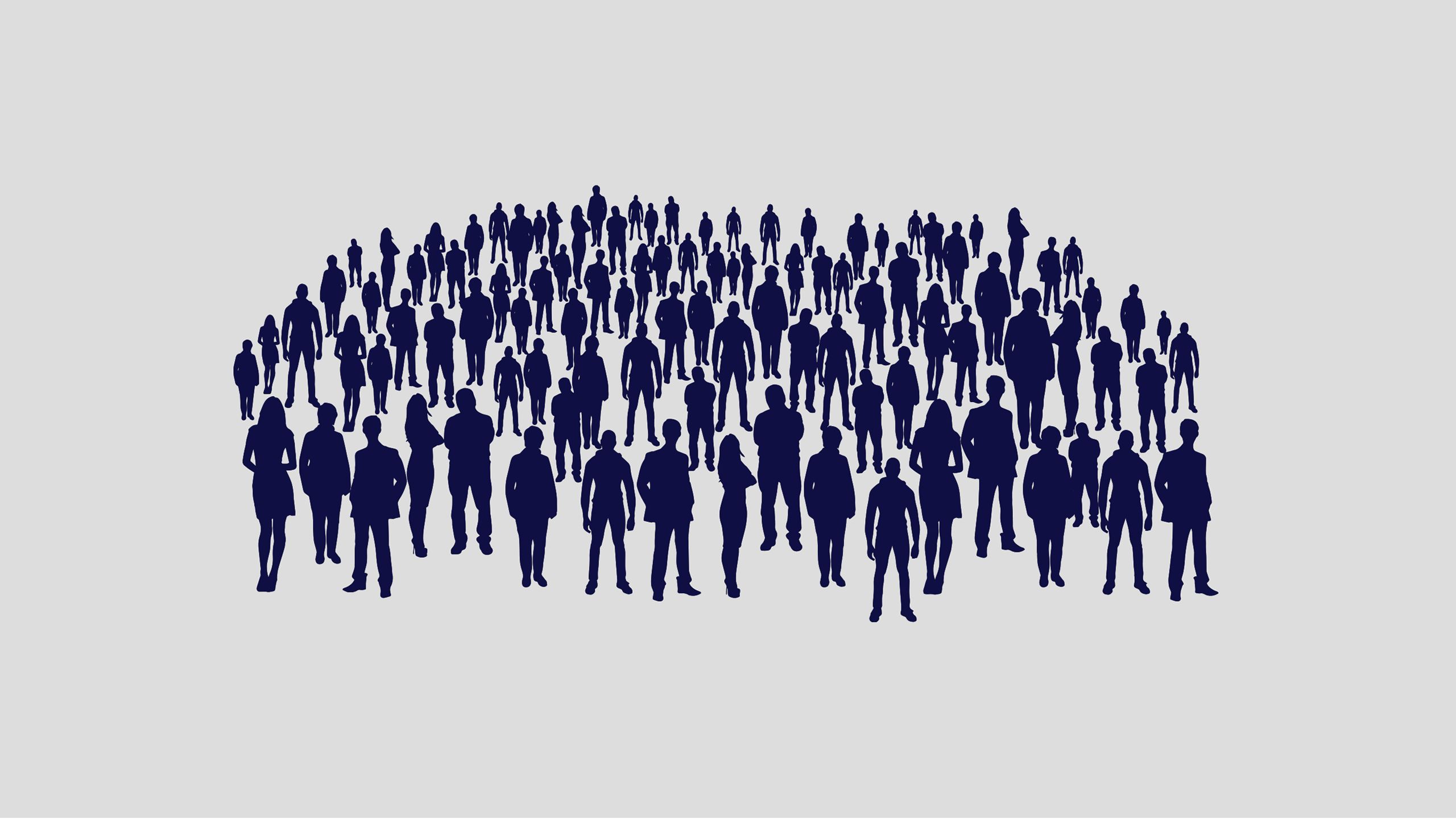
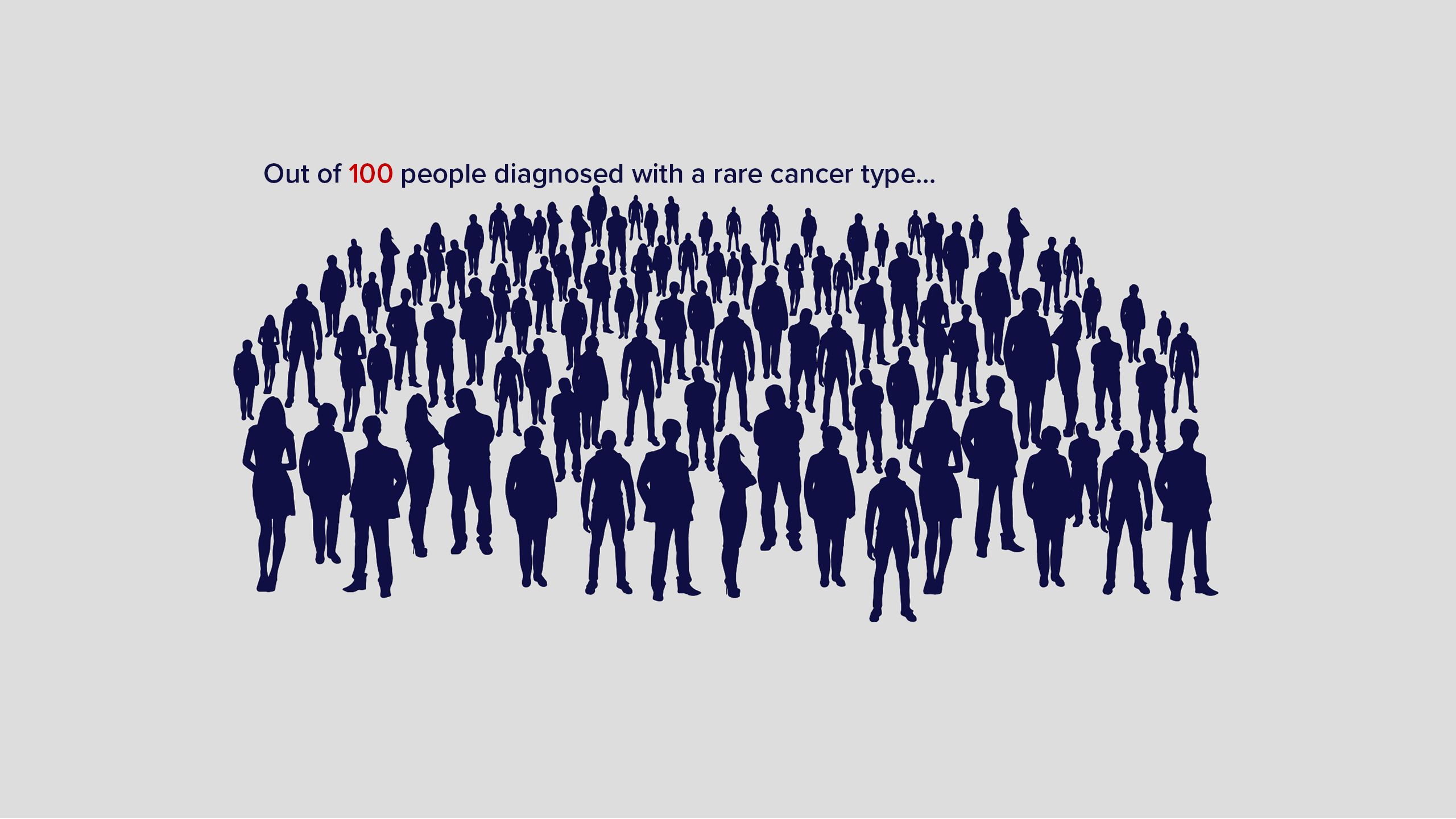


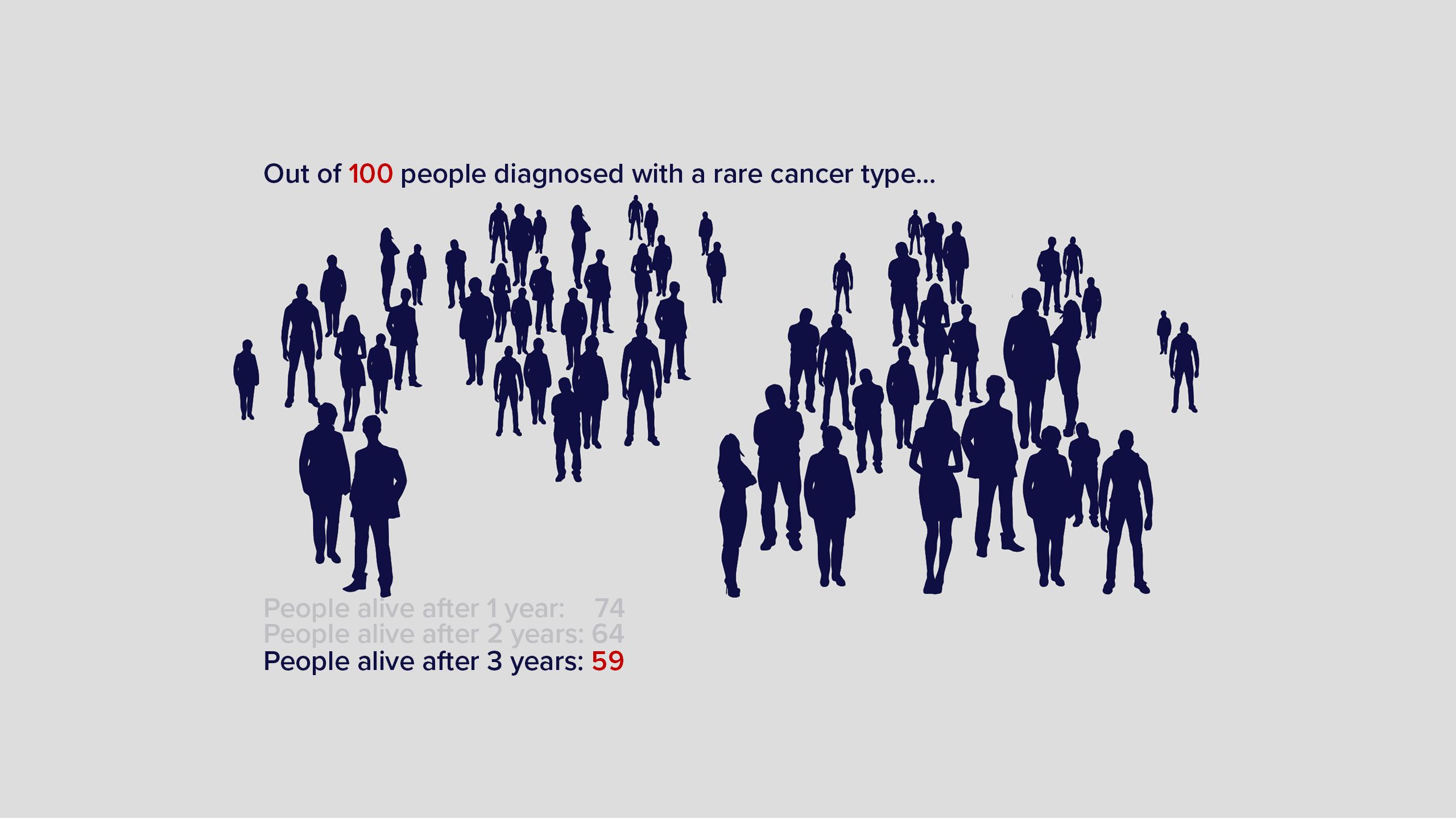

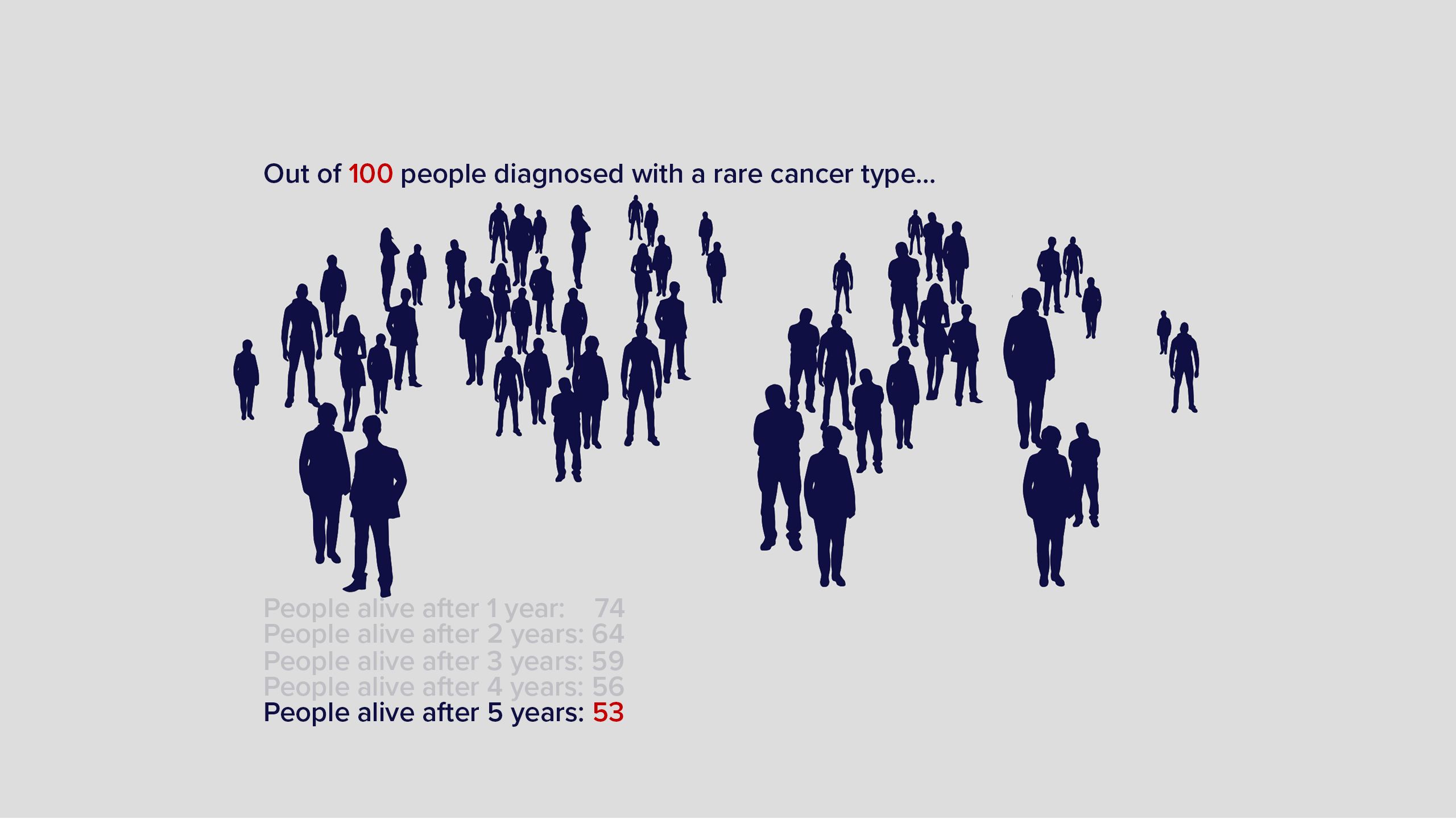

What causes rare cancers?
Rare cancers can be caused by various factors, and often, the specific cause is unknown. Even though as a combined group they occur frequently, it’s challenging to conduct research to pinpoint the exact cause of each individual type of rare cancer.
However, similarly for all cancer types, maintaining a healthy lifestyle by not smoking, reducing alcohol consumption, eating healthy foods and being physically active are ways to reduce the risk of cancer.
Use Cancer Council Queensland’s free Cancer Risk Calculator to find out the changes you can make to lower your cancer risk.
How do diagnosis and survival rates vary with location in Australia? Here is what the research team found.
The impact of rare cancers and how they vary geographically across Australia has not been extensively studied until now. The research team recently examined the geographical variation in diagnosis and survival rates for all rare cancers combined across Australia. Using statistical models developed for the award-winning Australian Cancer Atlas (www.atlas.cancer.org.au), they found a concerning disparity in diagnosis and survival rates between advantaged and disadvantaged regions. Their findings revealed that many areas in regional and remote areas of Australia have higher-than-average diagnosis rates, but lower survival rate for rare cancers. This suggests a strong association between the remoteness and level of disadvantage in an area and the diagnosis and survival rates of rare cancers.
Rare cancer diagnosis and survival rates are strongly associated with area remoteness and disadvantage.
Let's see how
⮟
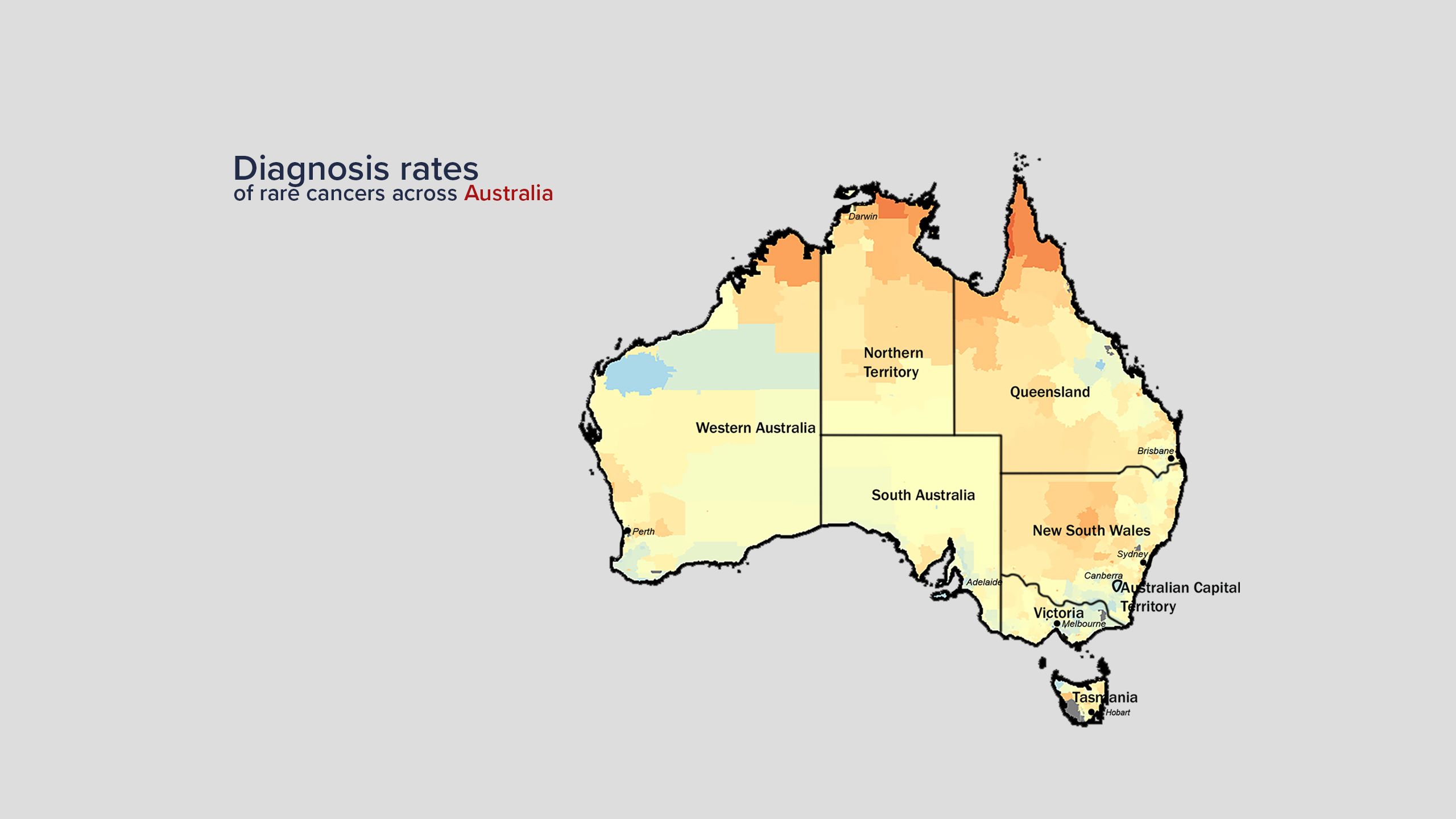
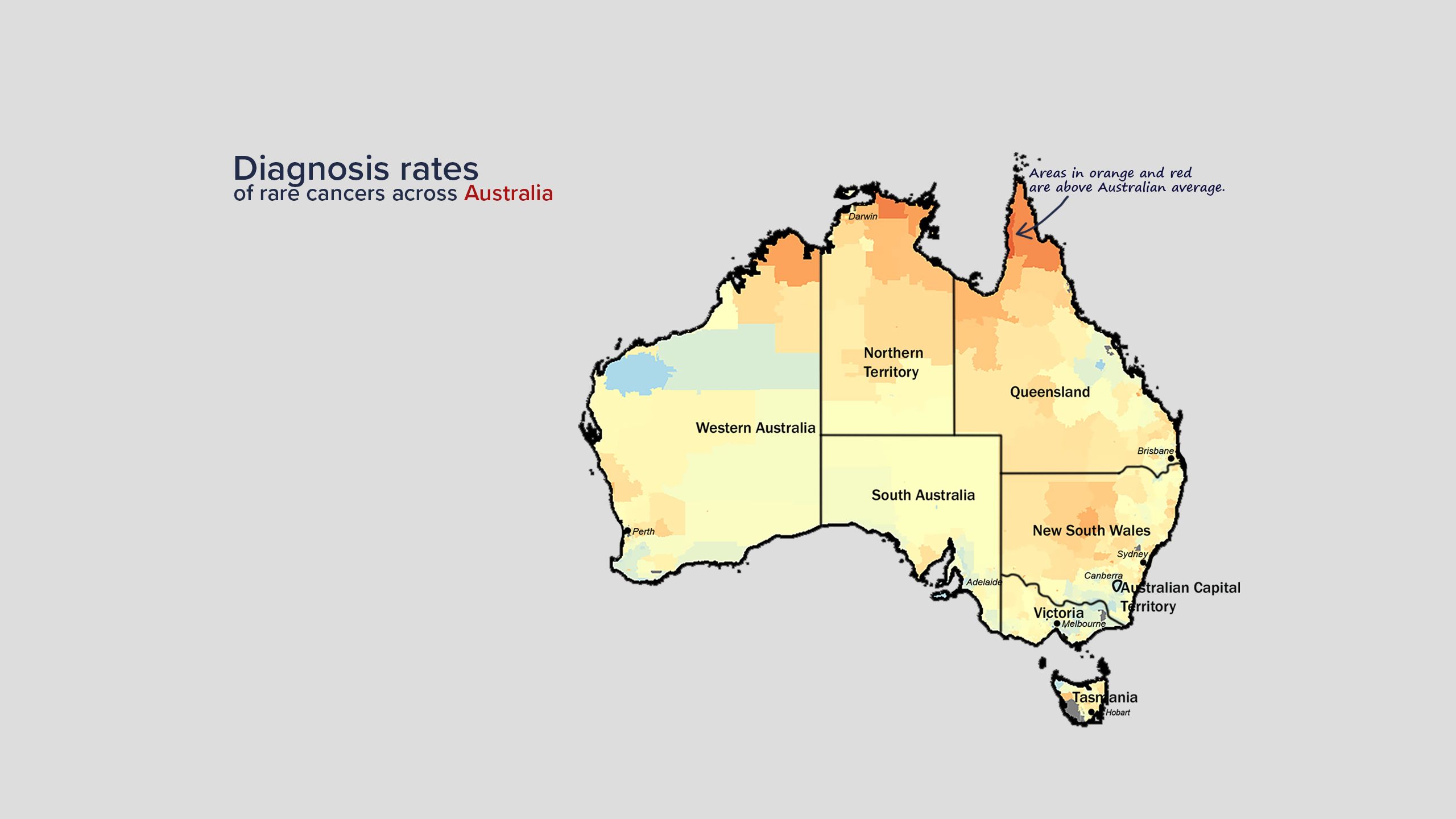
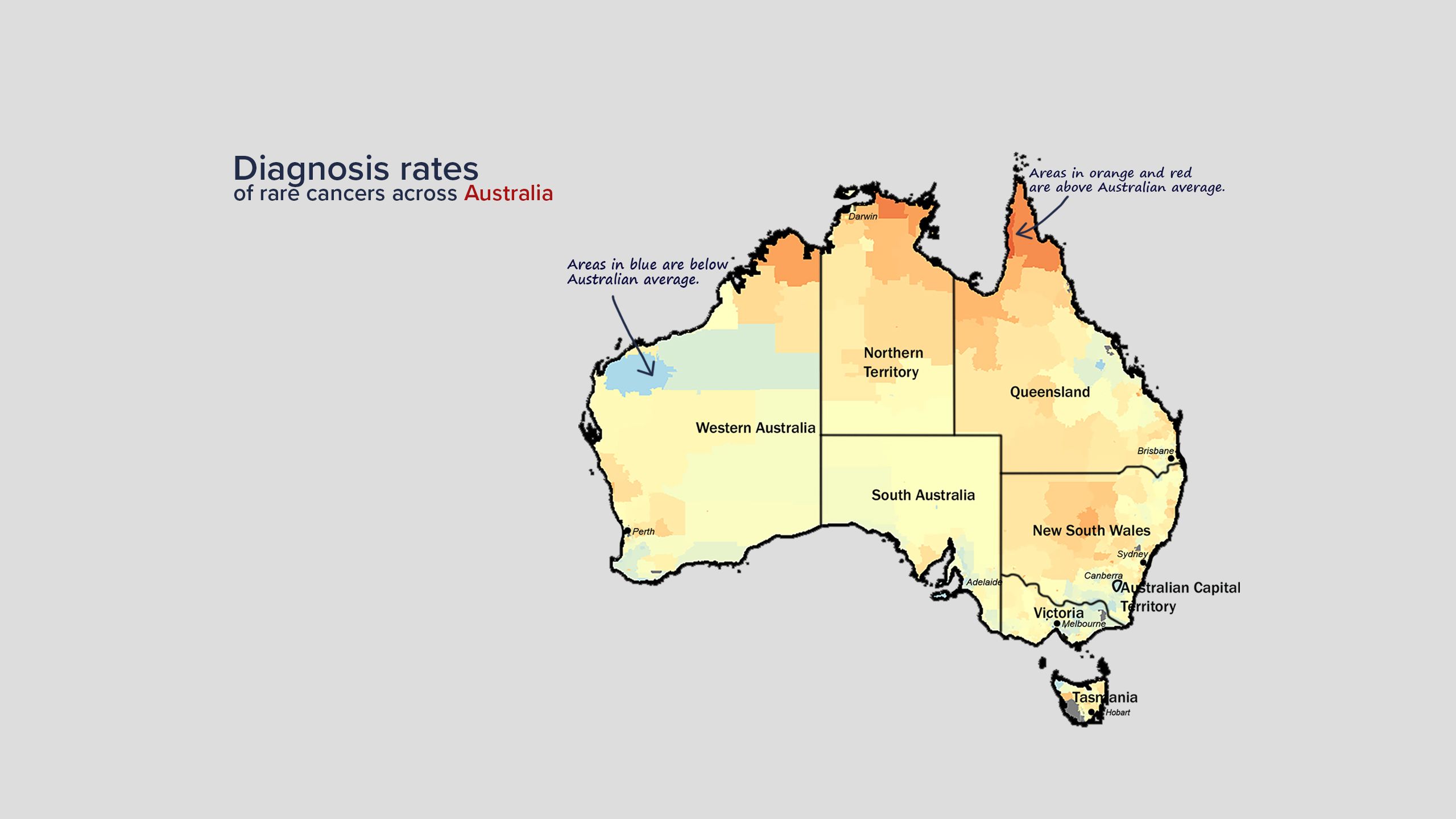
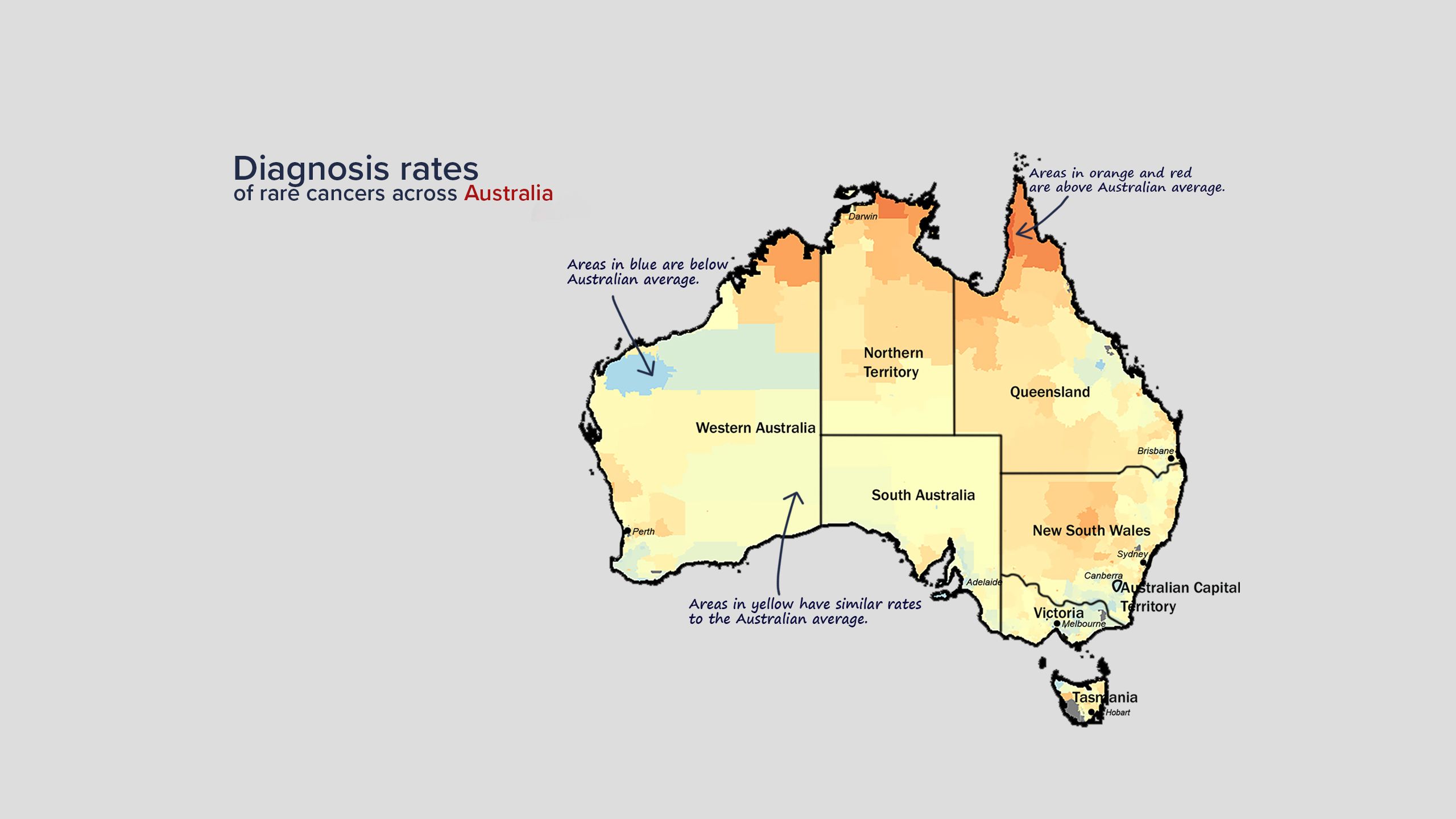
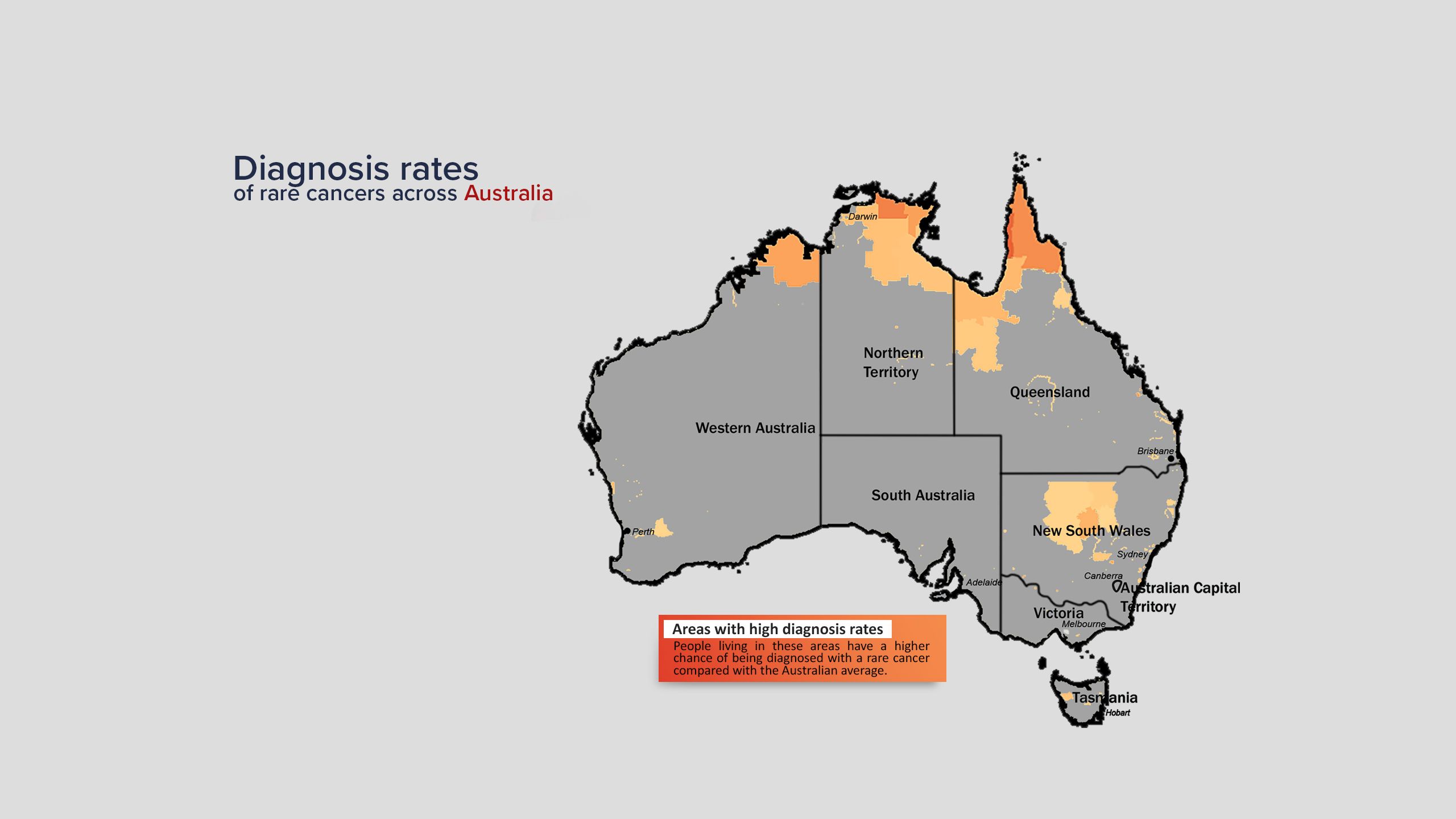
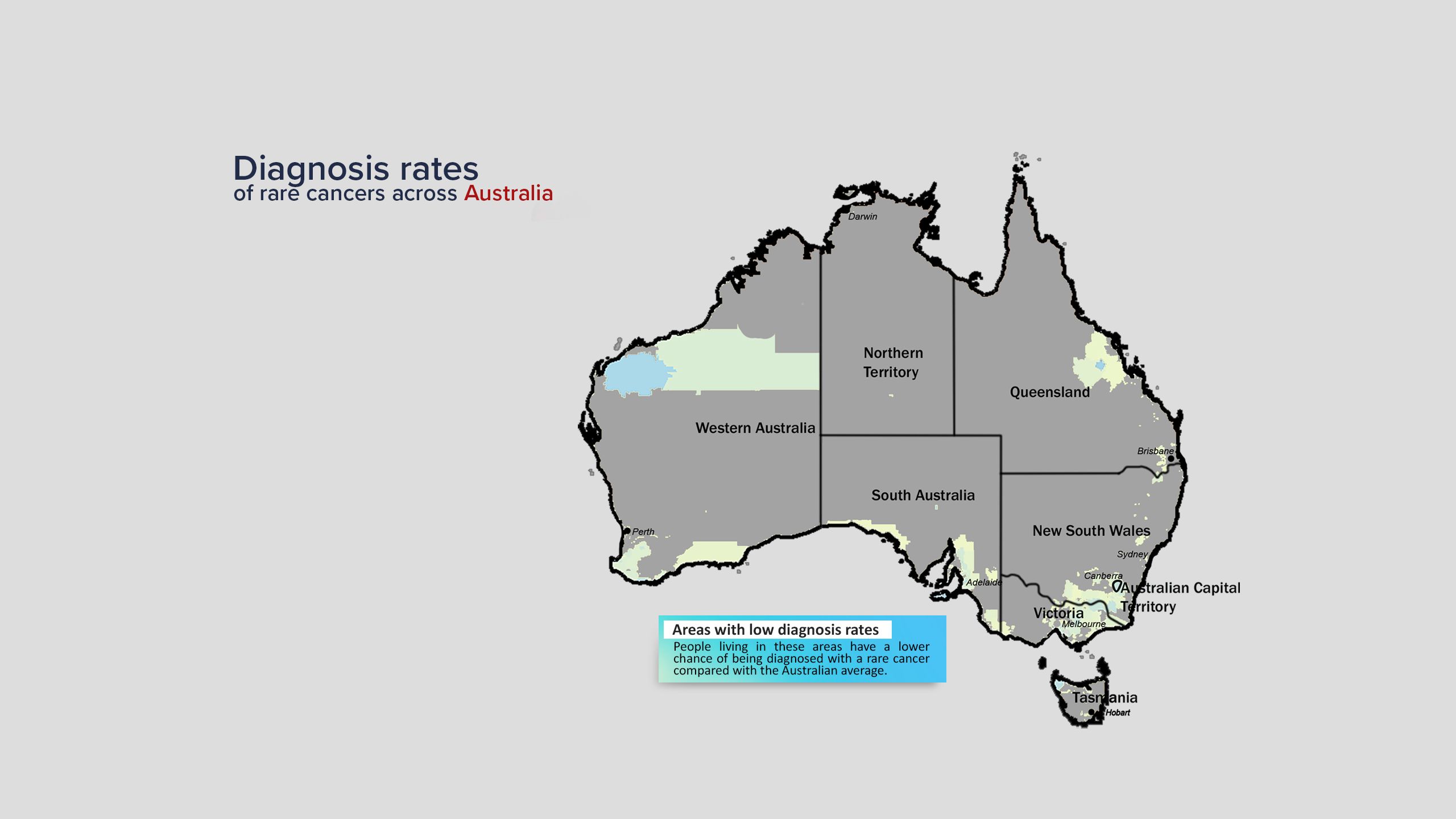

Diagnosis rates were higher than average in the Northern Territory, far north Queensland and rural areas of New South Wales. Rates were also higher in areas with the greatest socioeconomic disadvantage.
In comparison, as shown in this map, advantaged areas tended to have lower diagnosis rates. The lowest diagnosis rate for rare cancers was in the Australian Capital Territory.
Many areas in Western and South Australia have similar diagnosis rates as the national average.
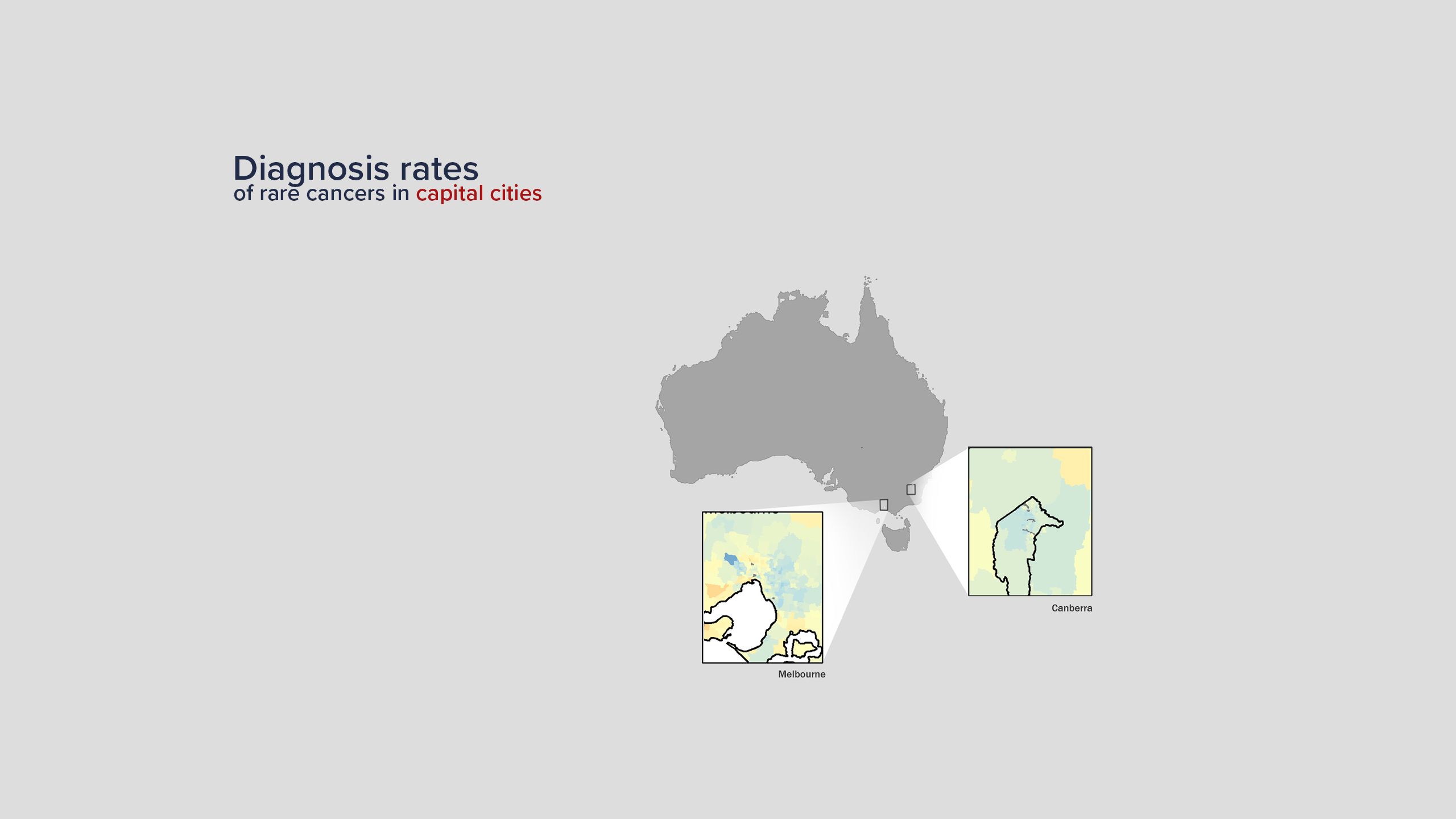
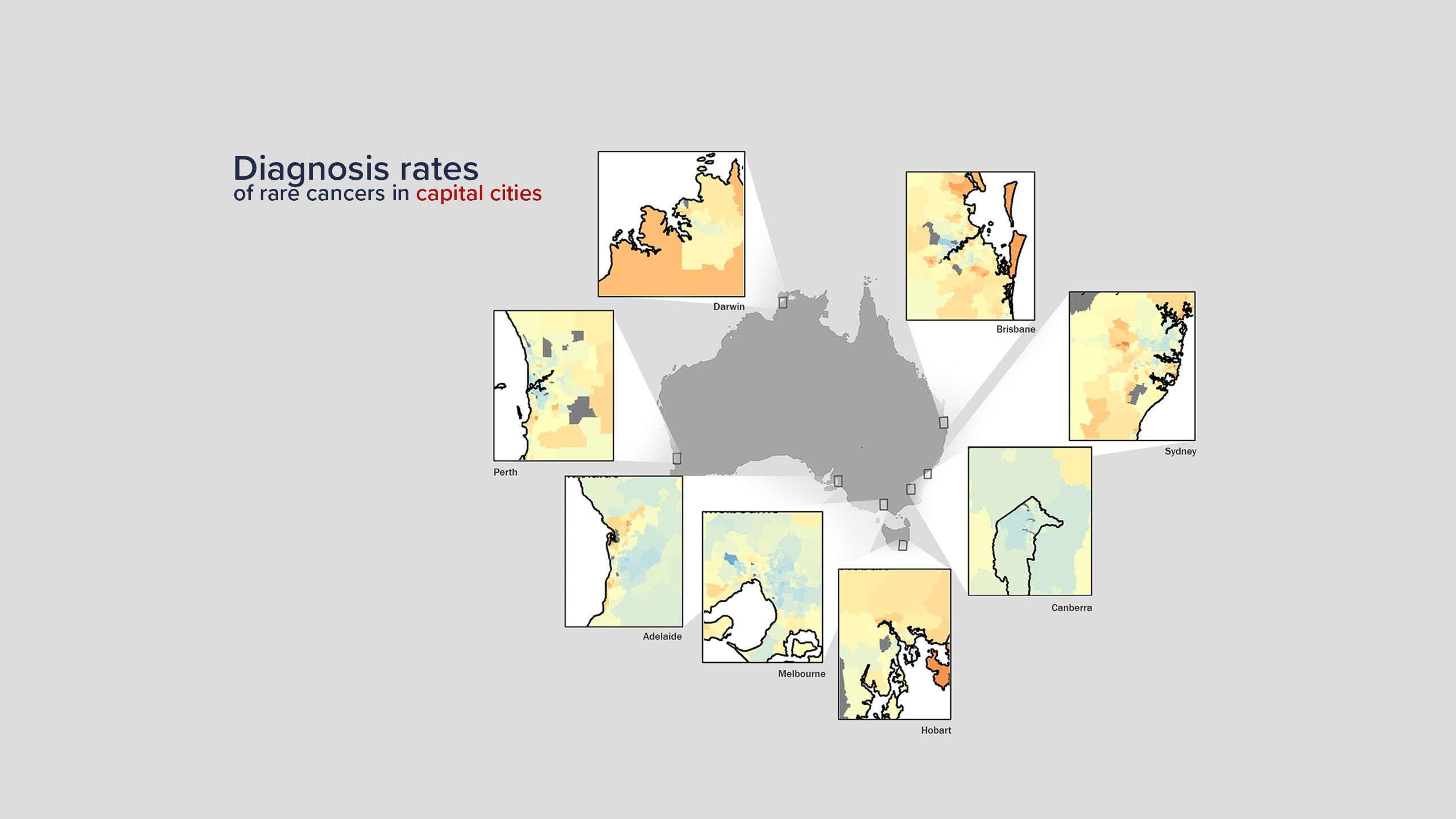
In most areas of Melbourne, the diagnosis rate of rare cancers was lower than the national average. Similarly, in all areas of Canberra, the diagnosis rate was either similar to or lower than the national average.
In other capital cities, diagnosis rates varied, often reflecting differences in socioeconomic disadvantage.

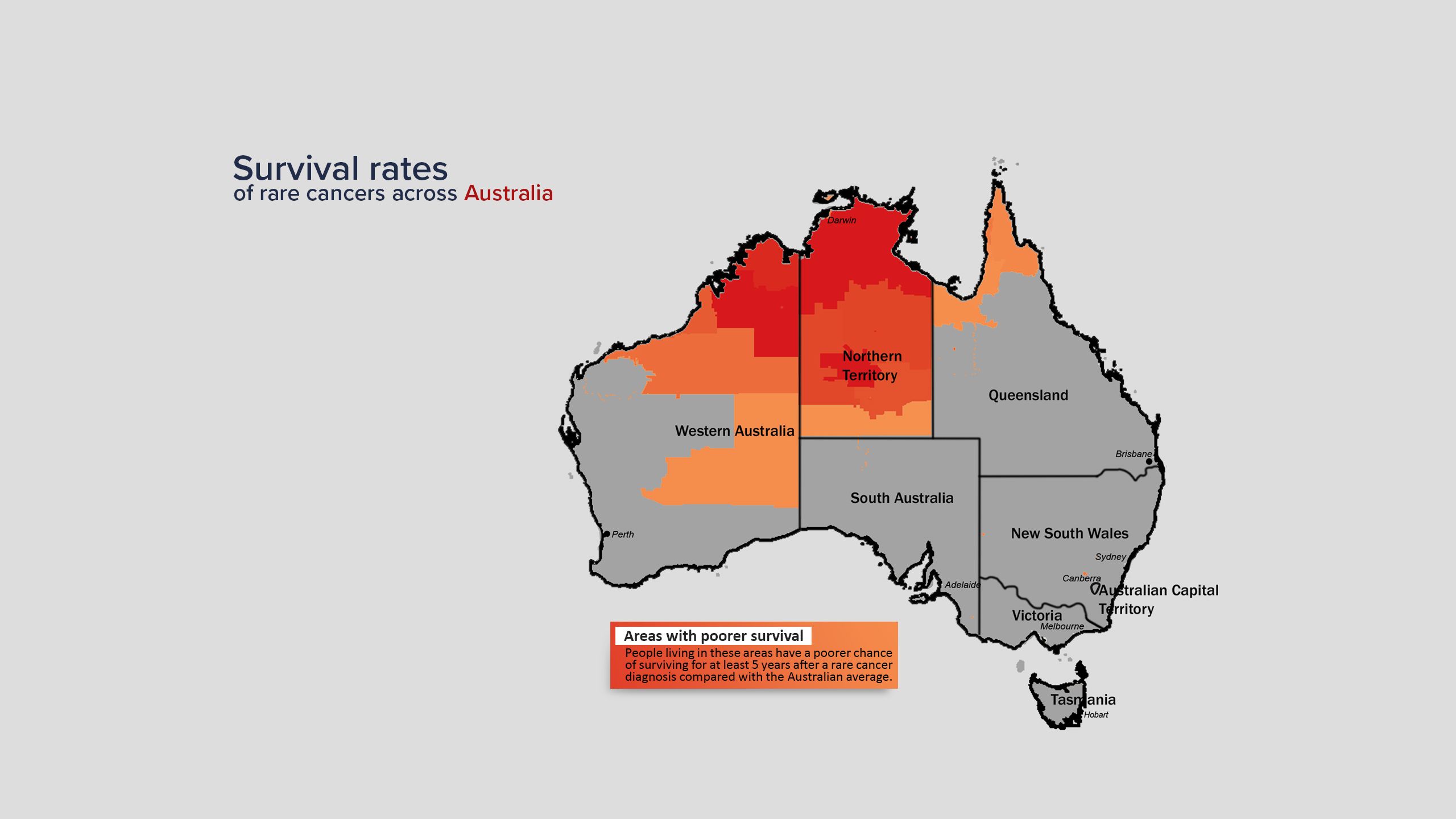
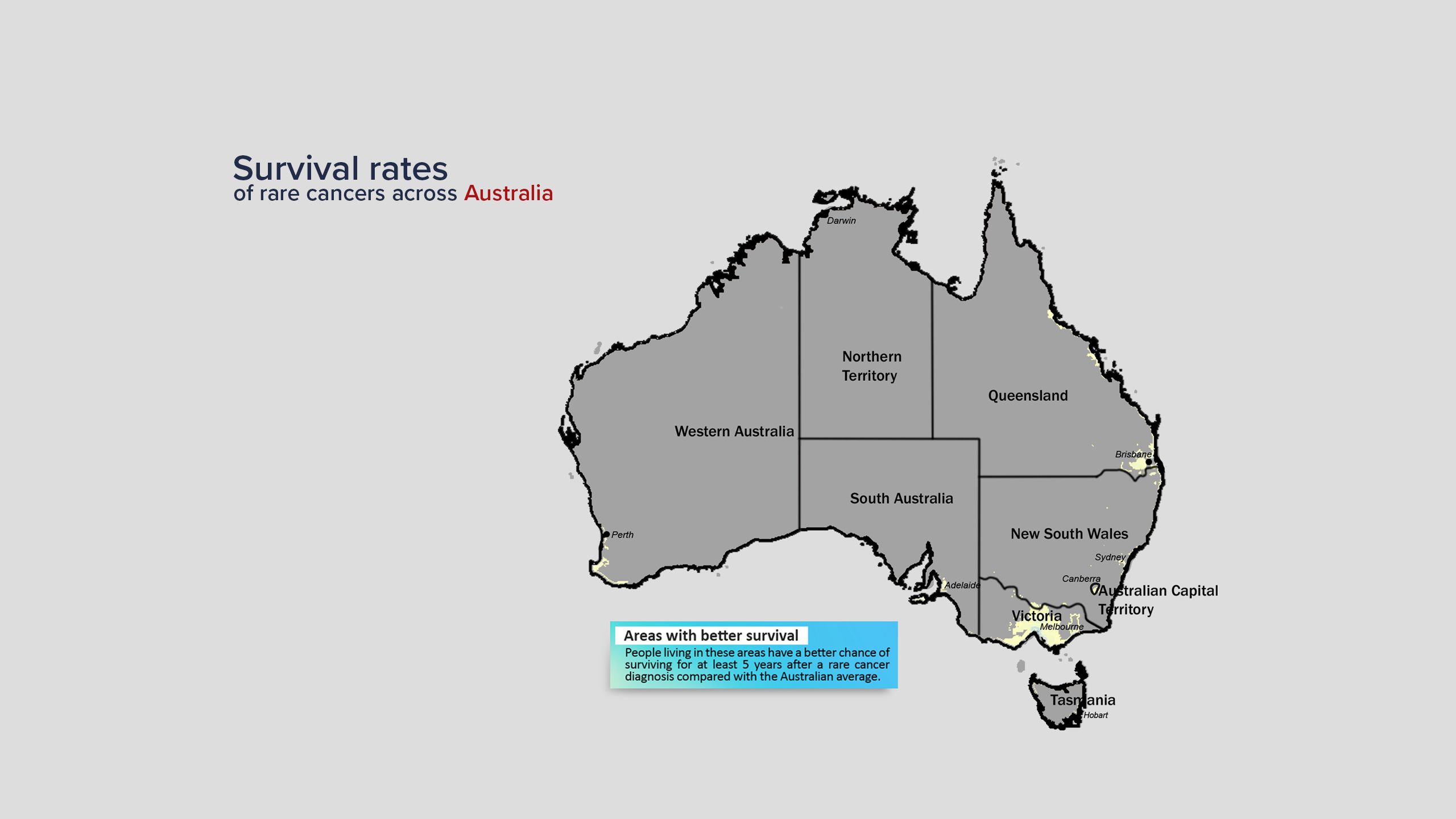
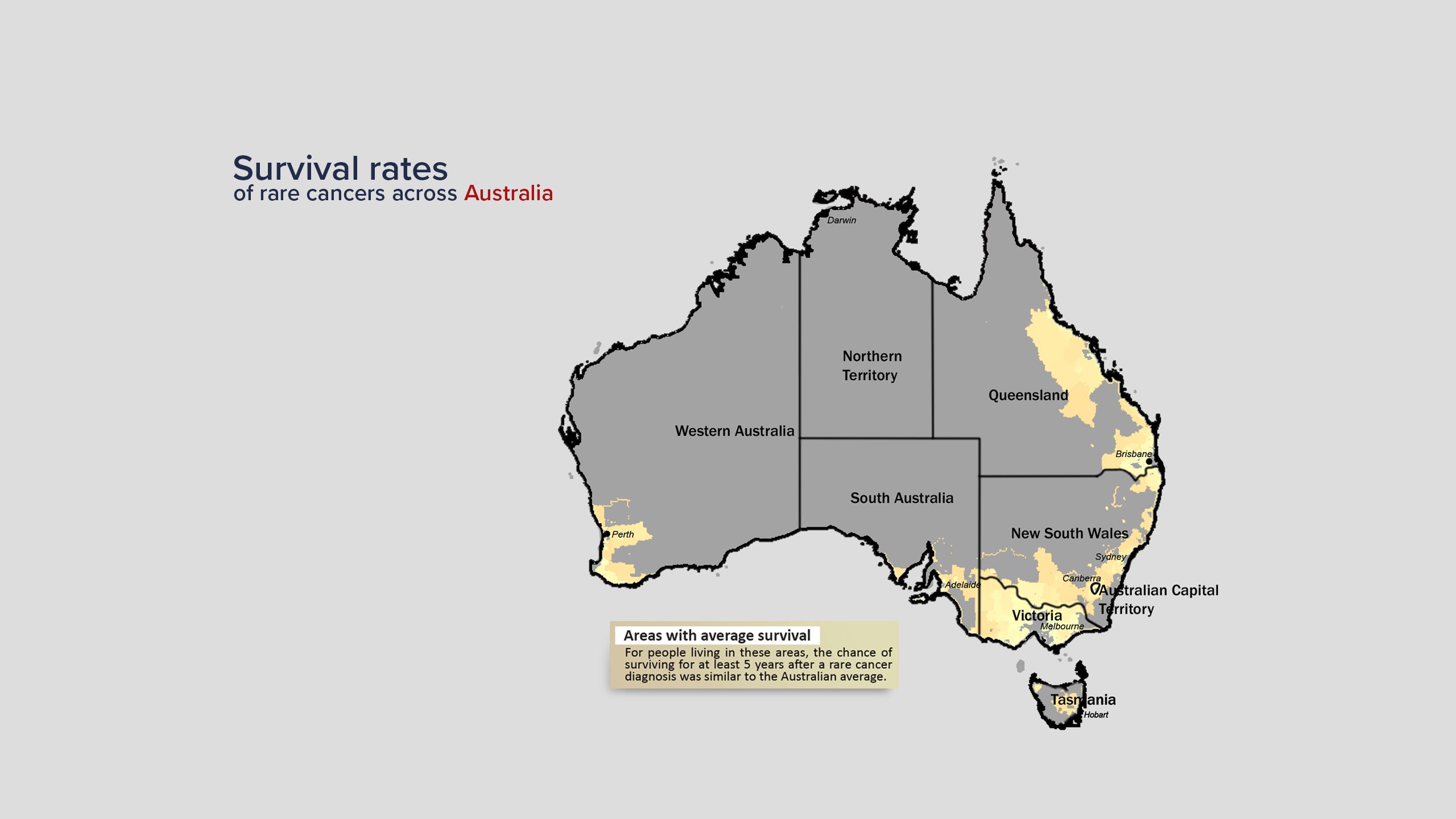
The survival rates in most disadvantaged and remote areas of Australia were substantially poorer than the rest of the country. These areas are highlighted with red and orange colour on the map.
The number of deaths among people with rare cancers was compared to the number of deaths in the general population, and the population mortality was adjusted for the age and sex of the people with rare cancers, allowing to compare similar groups. It’s revealed the number of deaths among Australians diagnosed with rare cancers, exceeded the number in the general population by 11,019, including 6,763 among males and 4,256 among females. Therefore, 90% of the deaths were in excess of the mortality that would be expected in the population in that specific region.
Survival rates in many areas located in northern, western, and central Australia, as well as Tasmania, were lower than the national average. The Northern Territory had the lowest survival rate.
In some areas of Brisbane, Melbourne and Sydney, survival was better than the national average.
Many areas of Victoria and the coastal regions of eastern and southern Australia had similar survival rates as the national average.
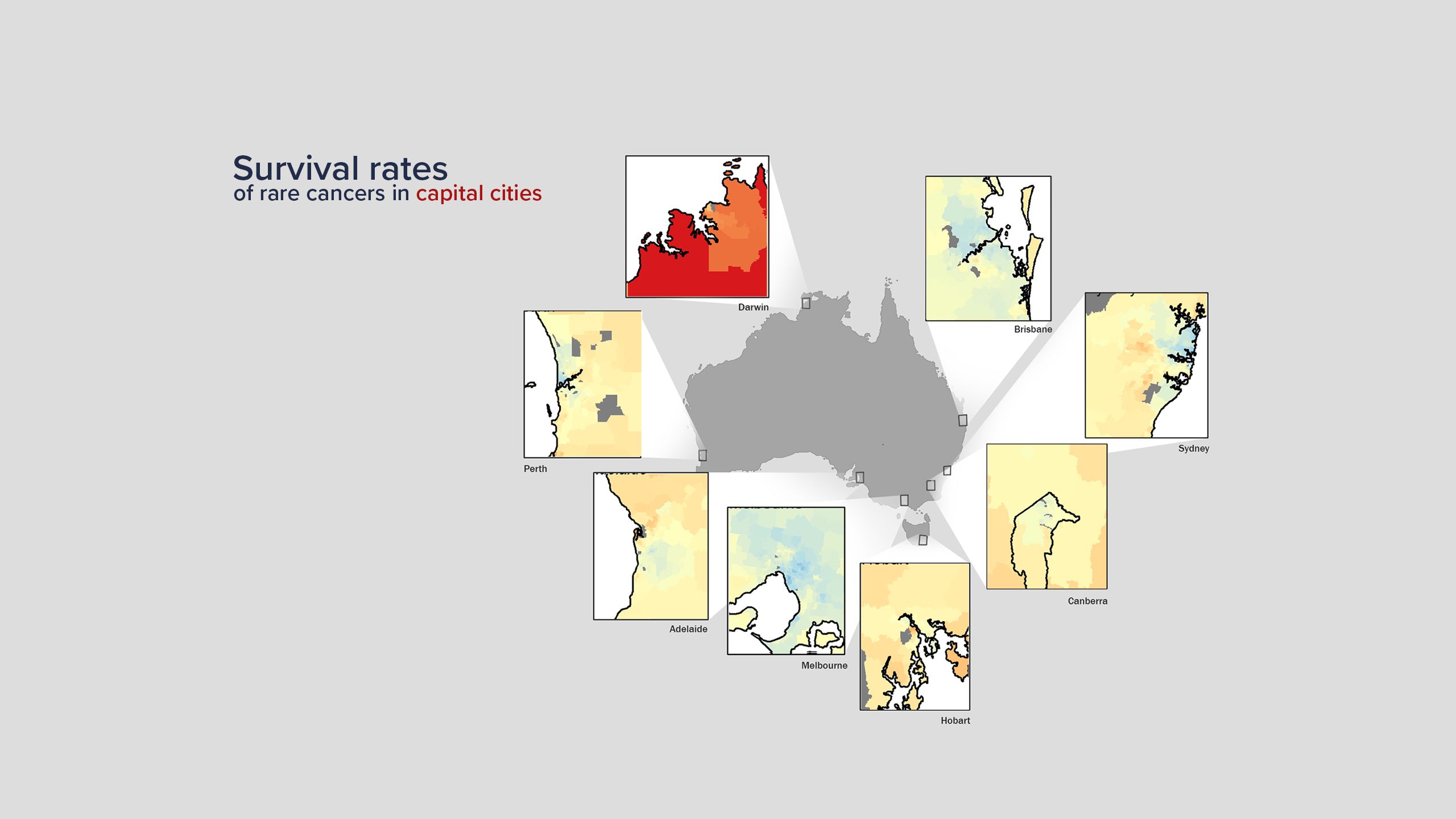
Survival rates varied substantially within the different capital cities across Australia. For example, they were generally better than the Australian average (indicated by the blue shade) in most areas of Melbourne and Sydney; in contrast all areas in Darwin had survival rates below the national average.
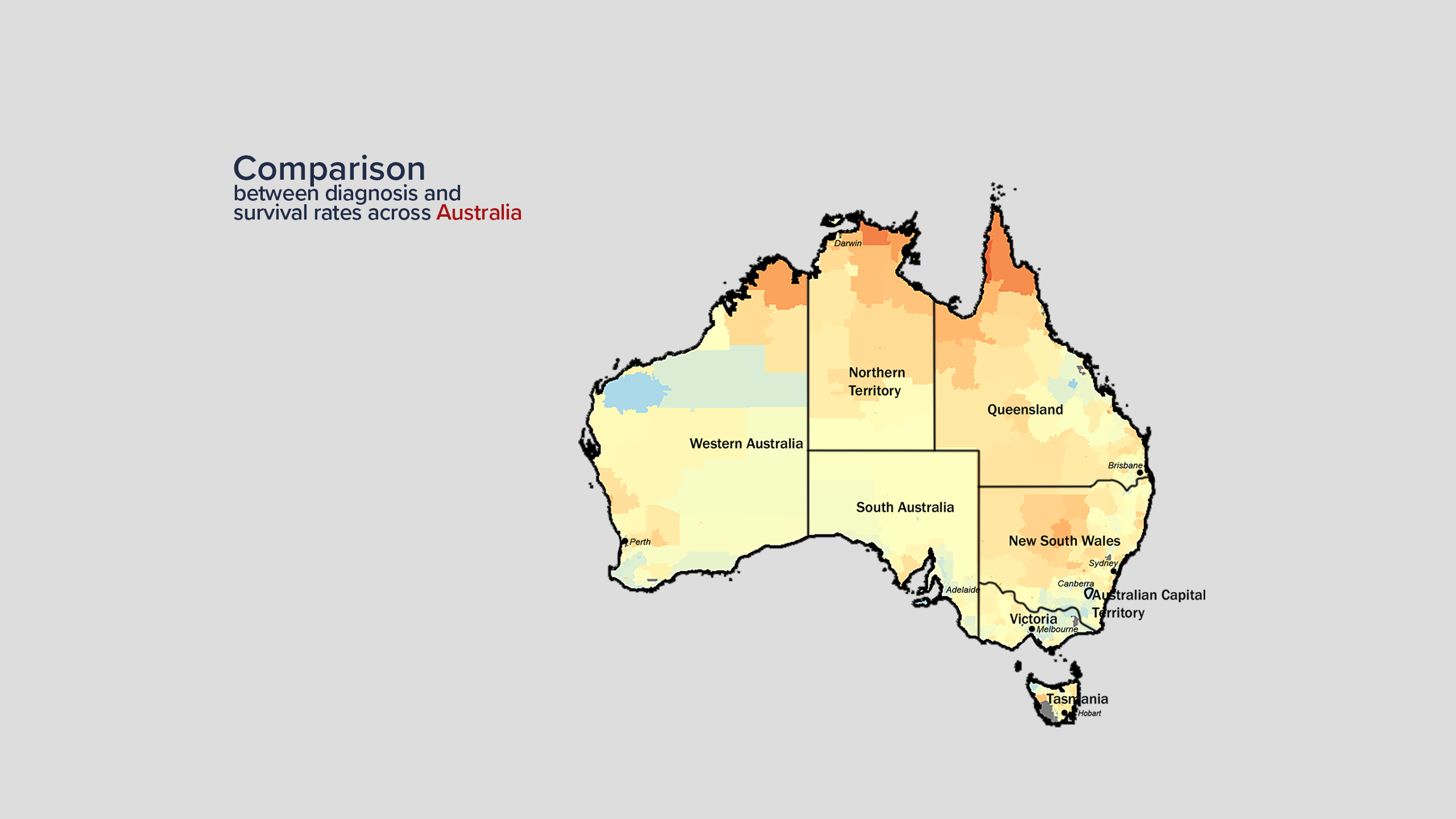
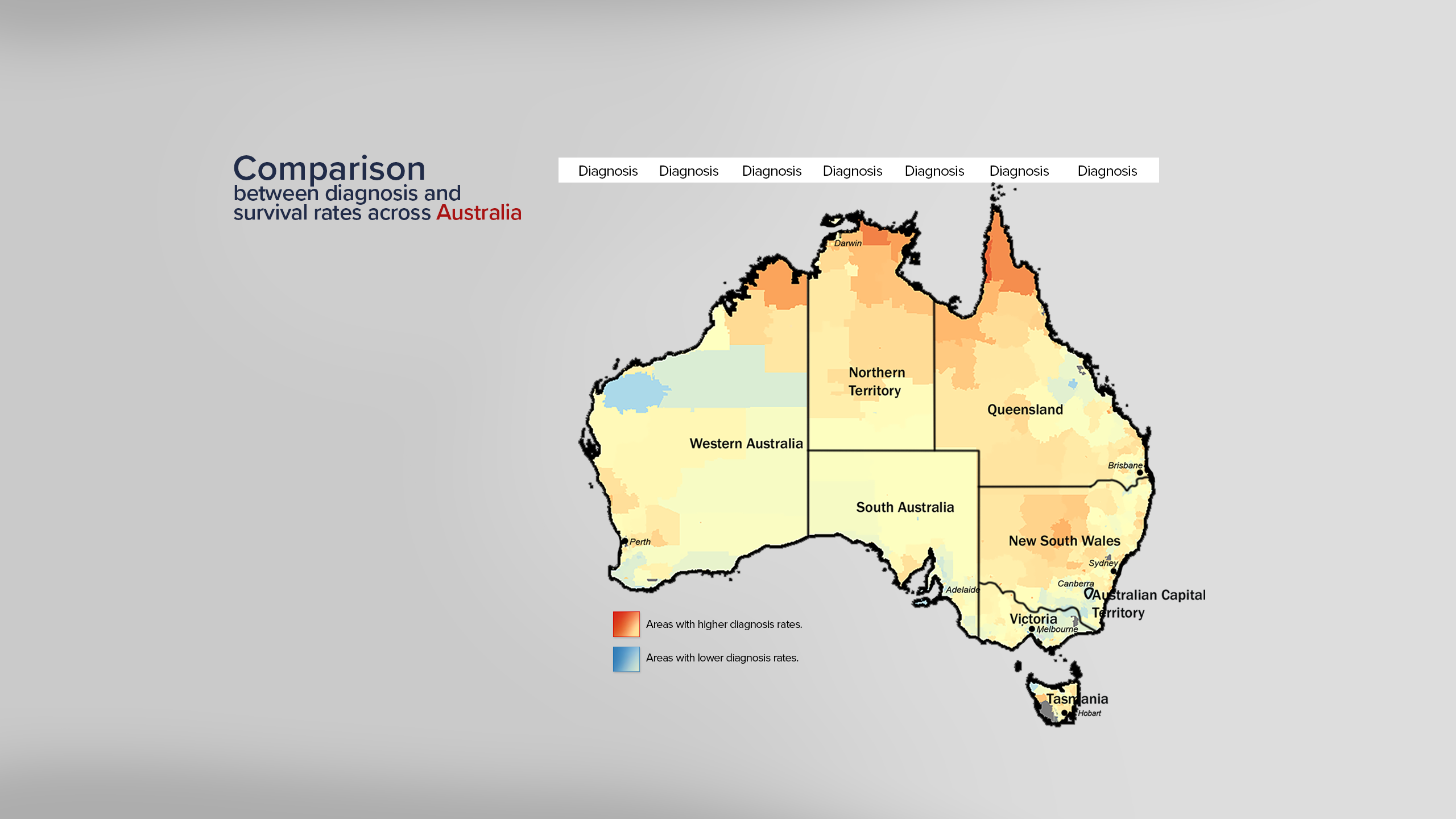
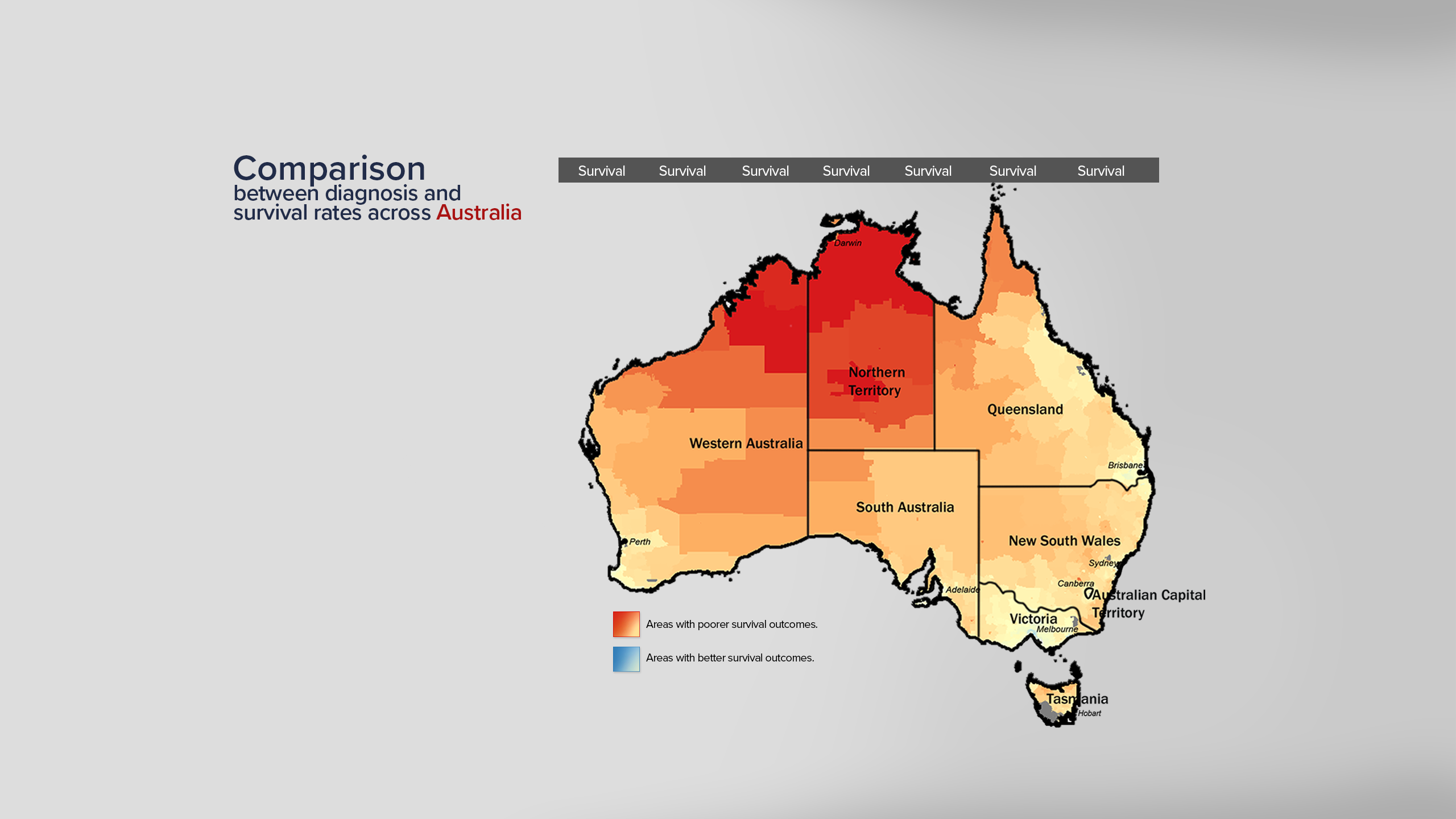
Most of the geographical areas that had higher-than-average diagnosis rates of rare cancer types also had worse-than-average survival. However, in rural and remote areas of the country, even areas with lower-than-average diagnosis rates also had worse-than-average survival rates.
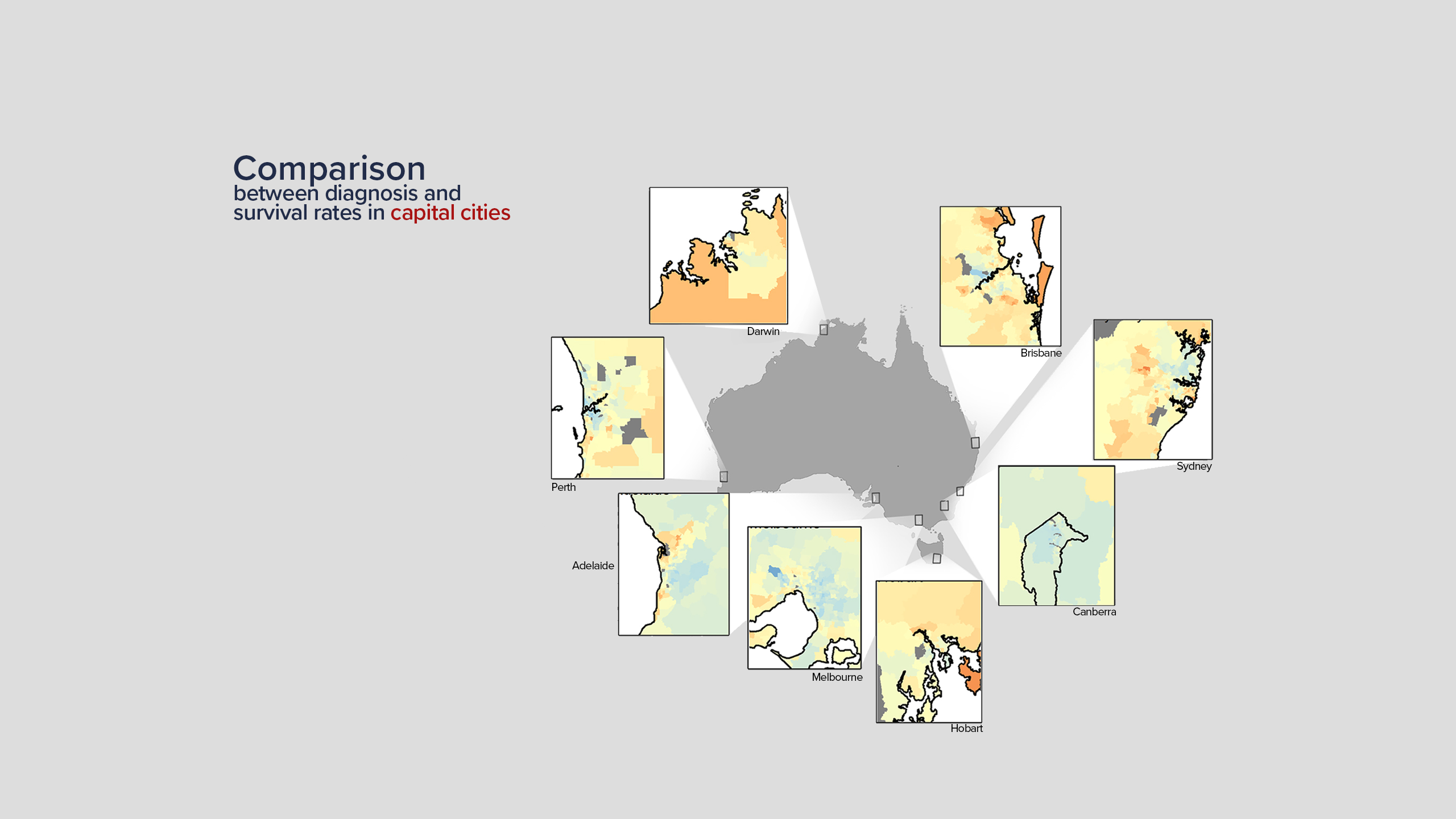
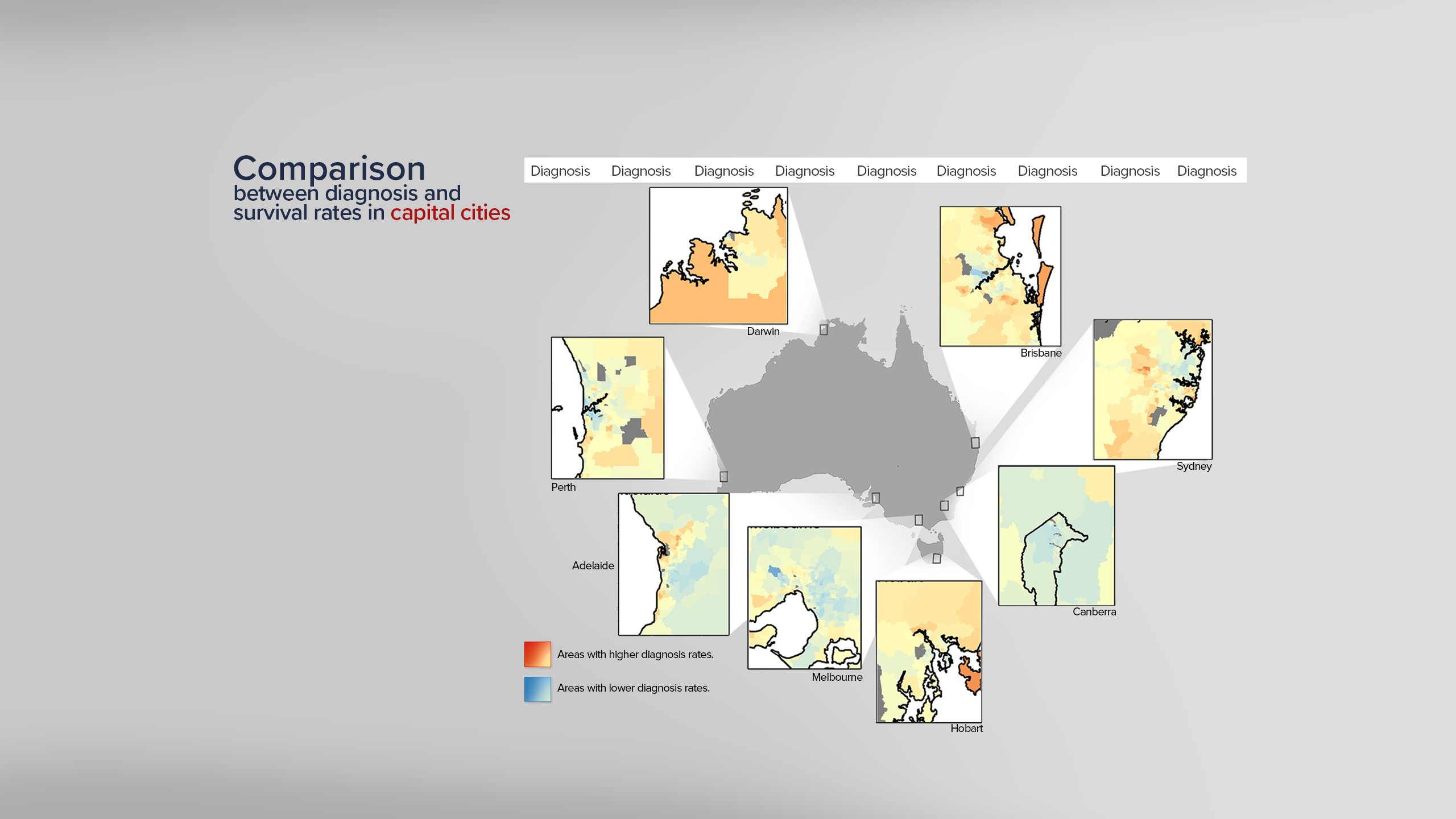

The association between diagnosis and survival rates was less clear in the capital city areas.
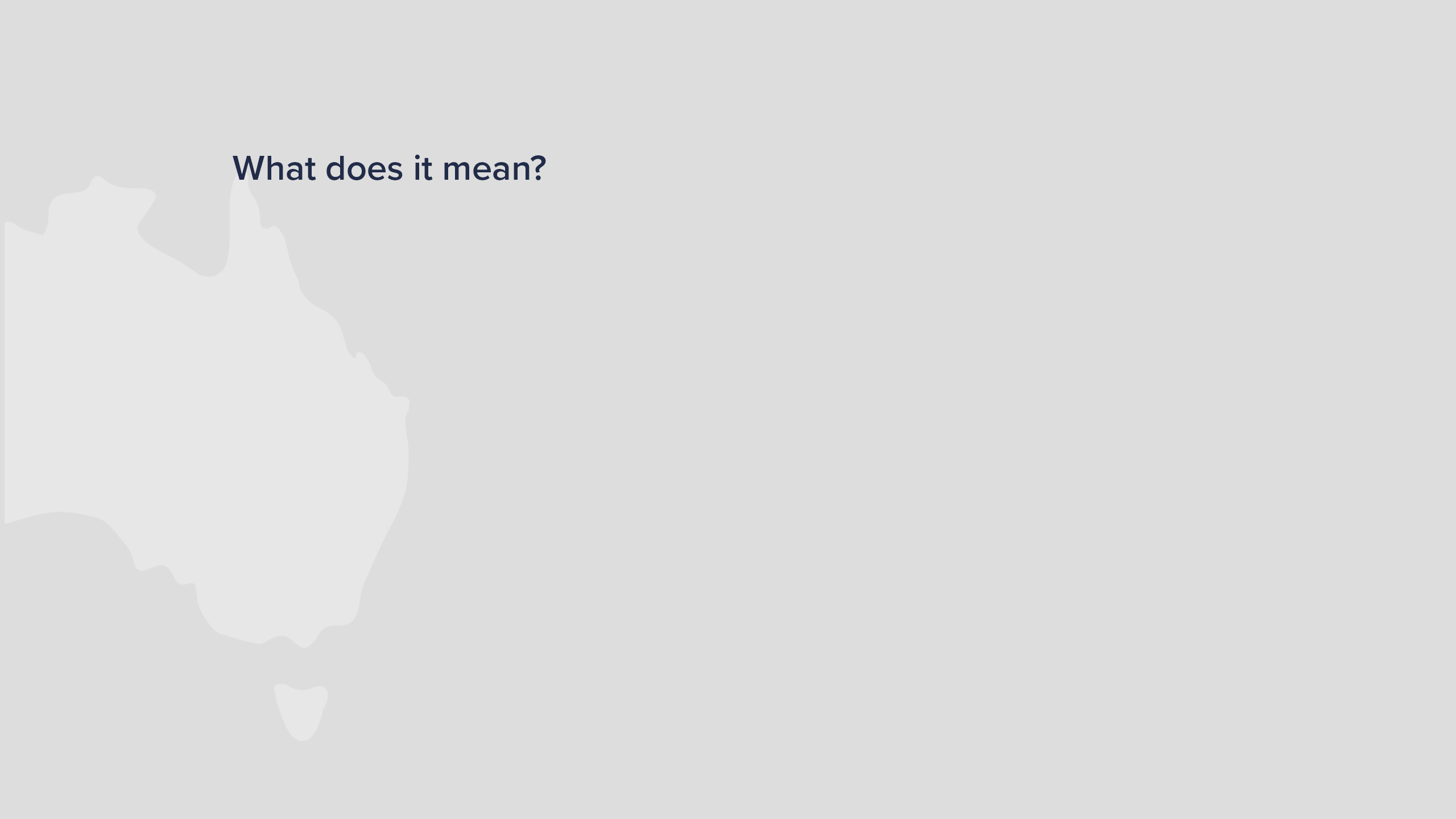
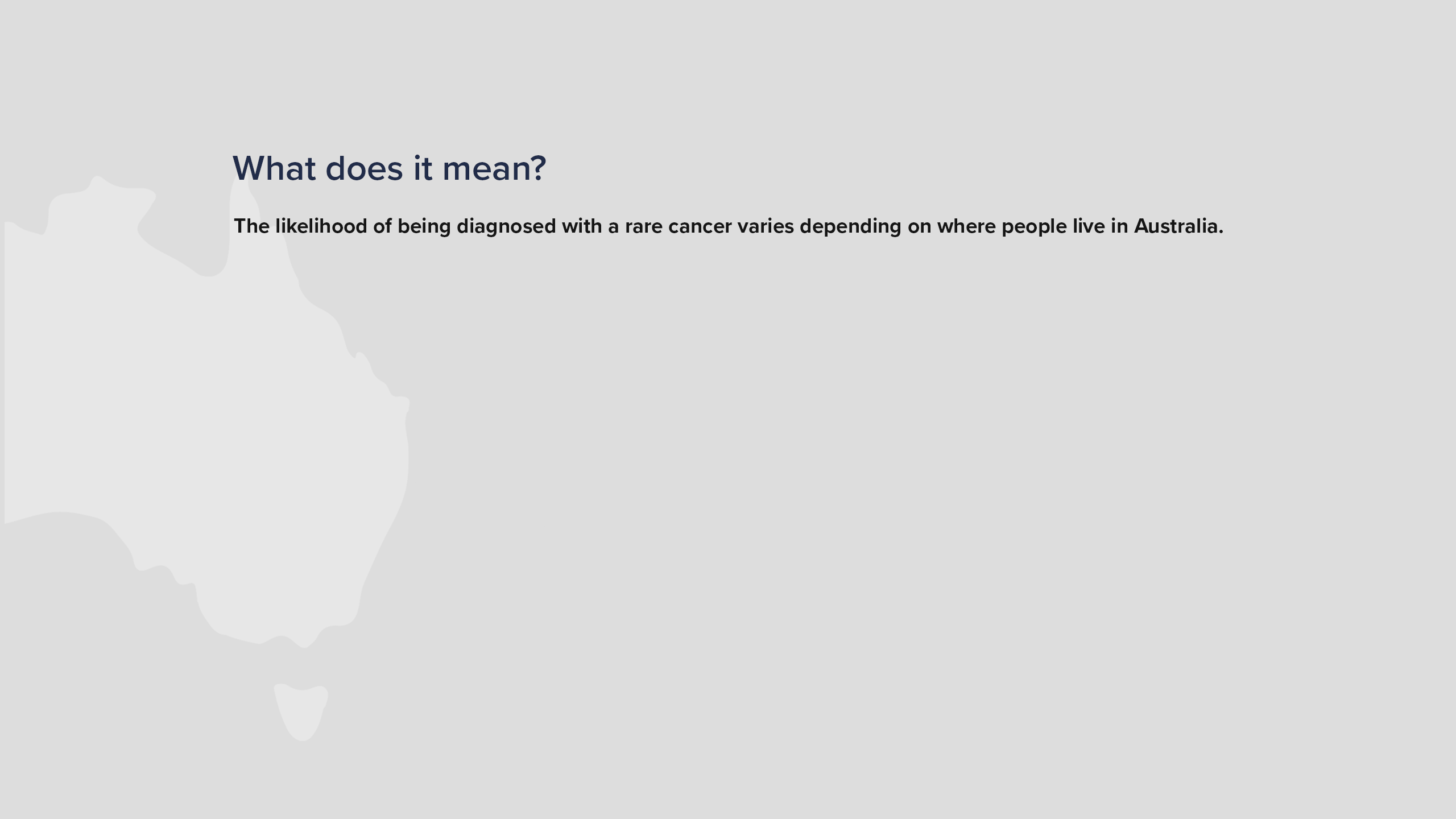
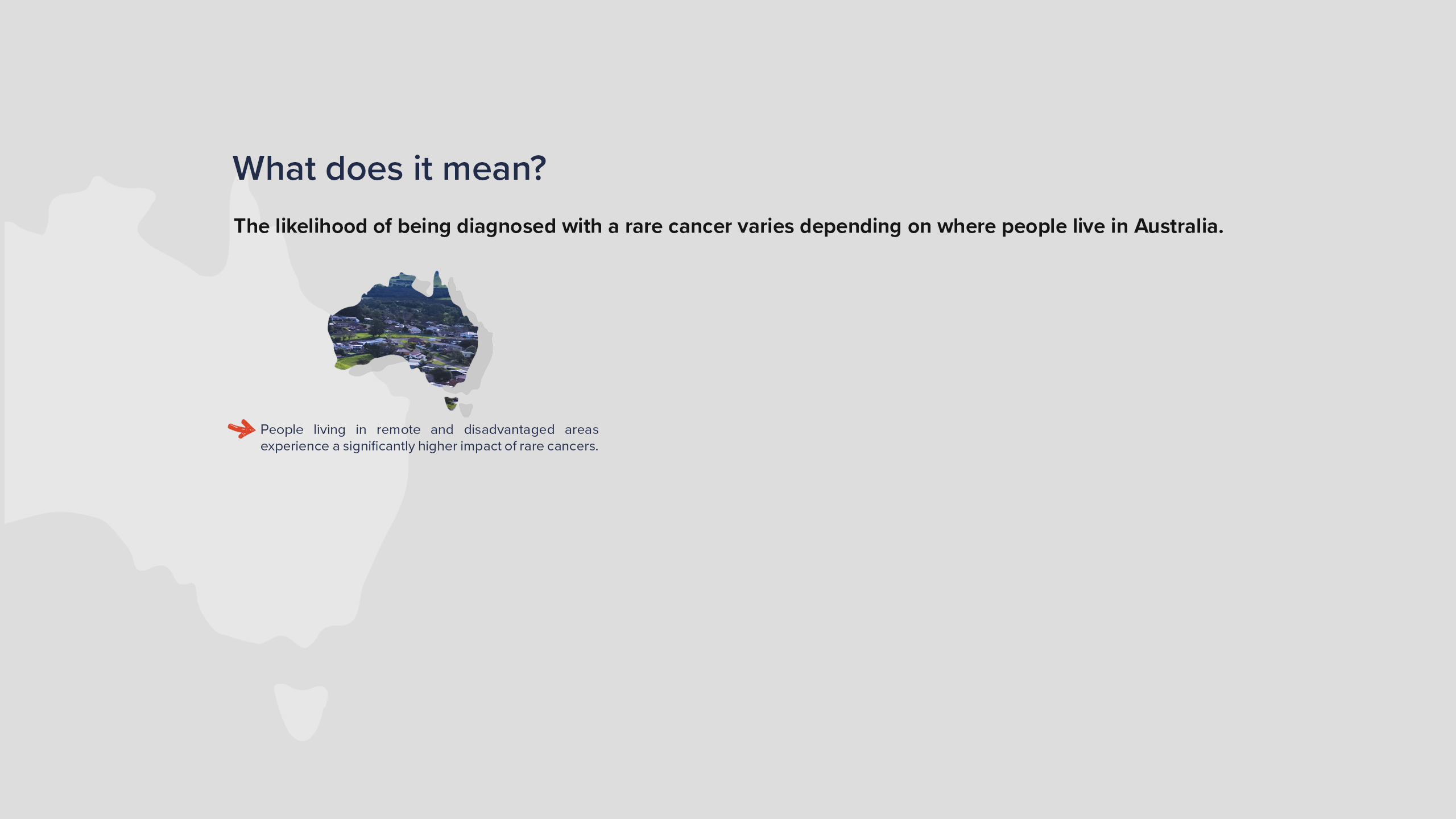
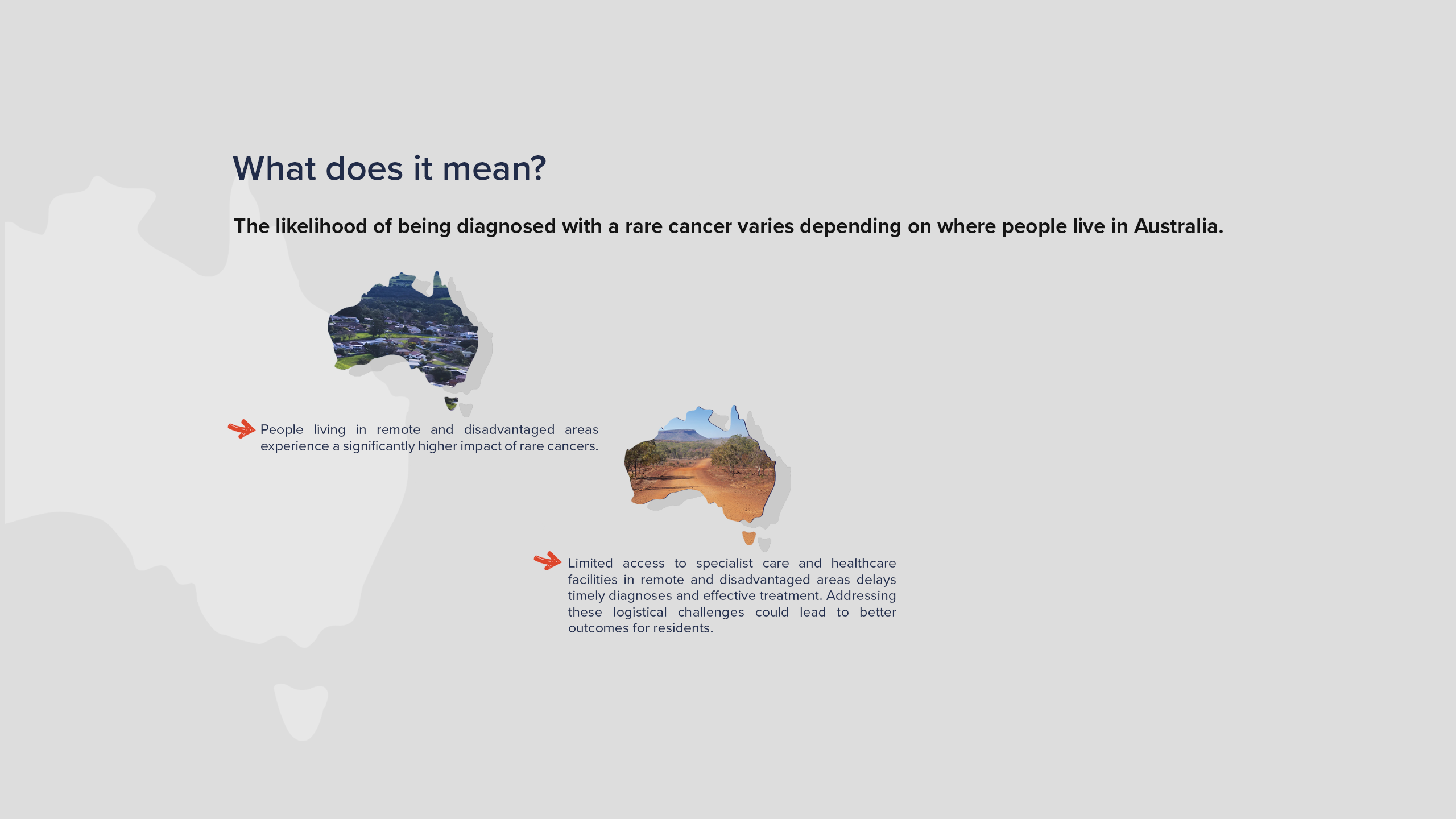

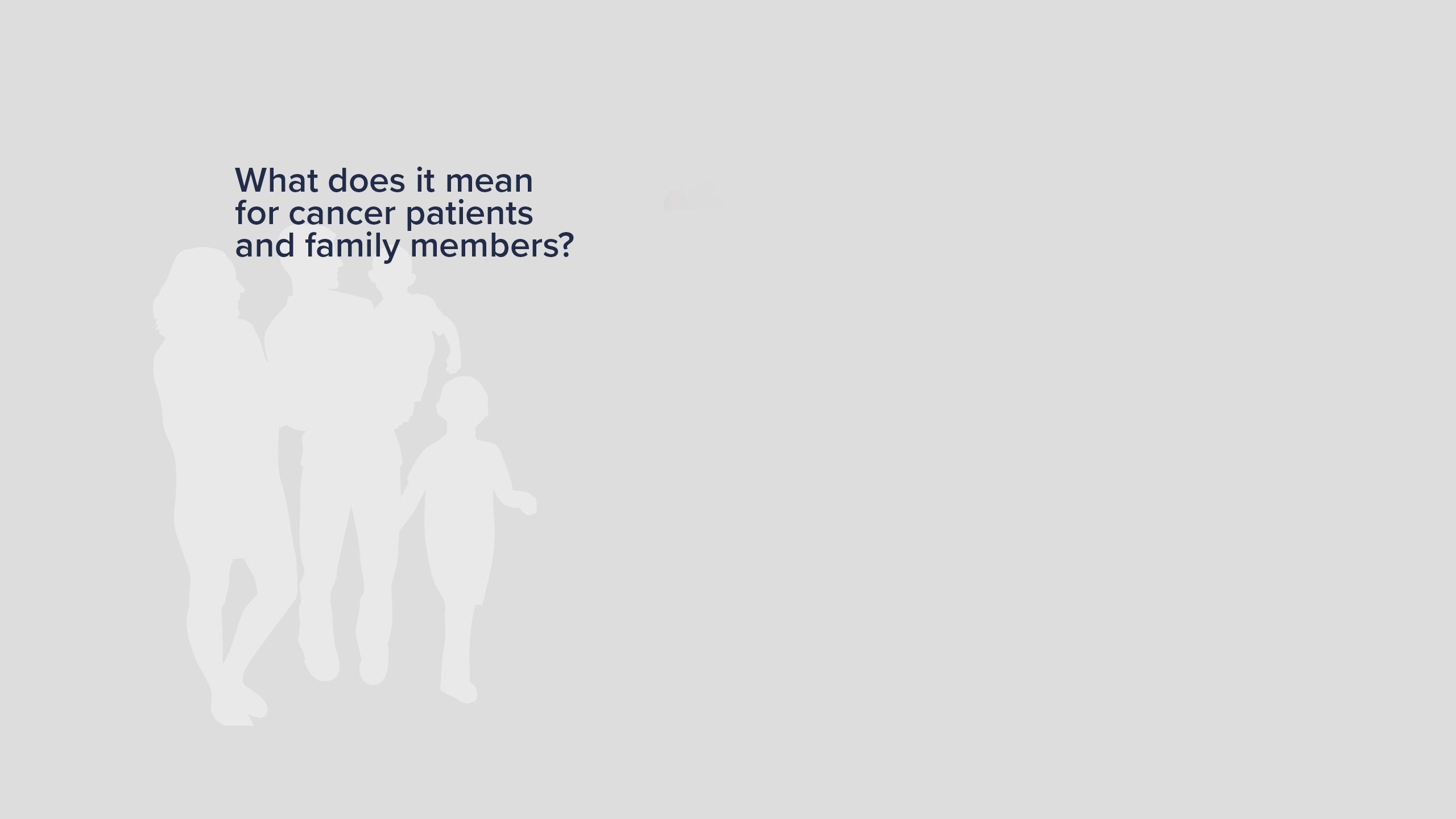
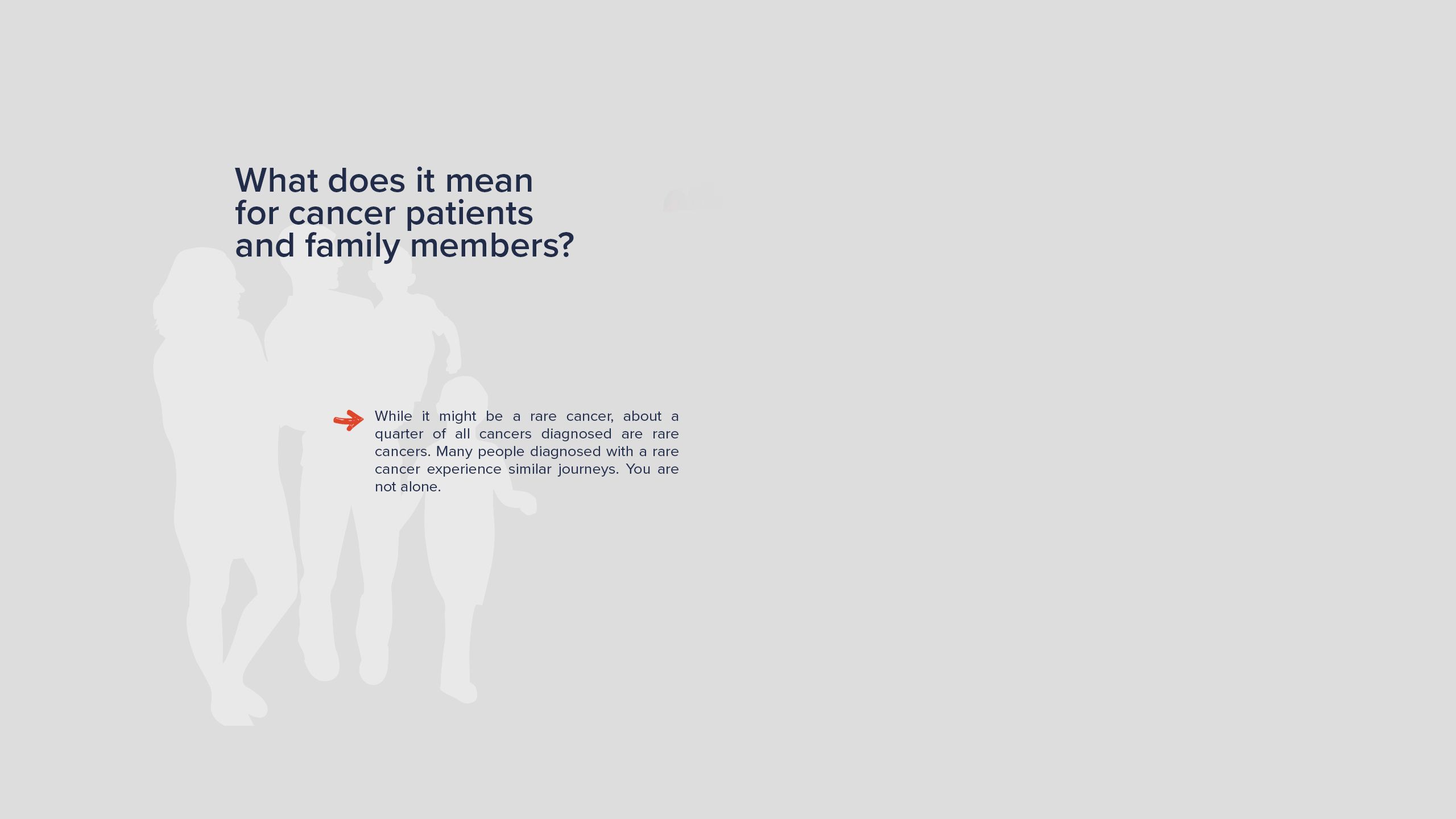
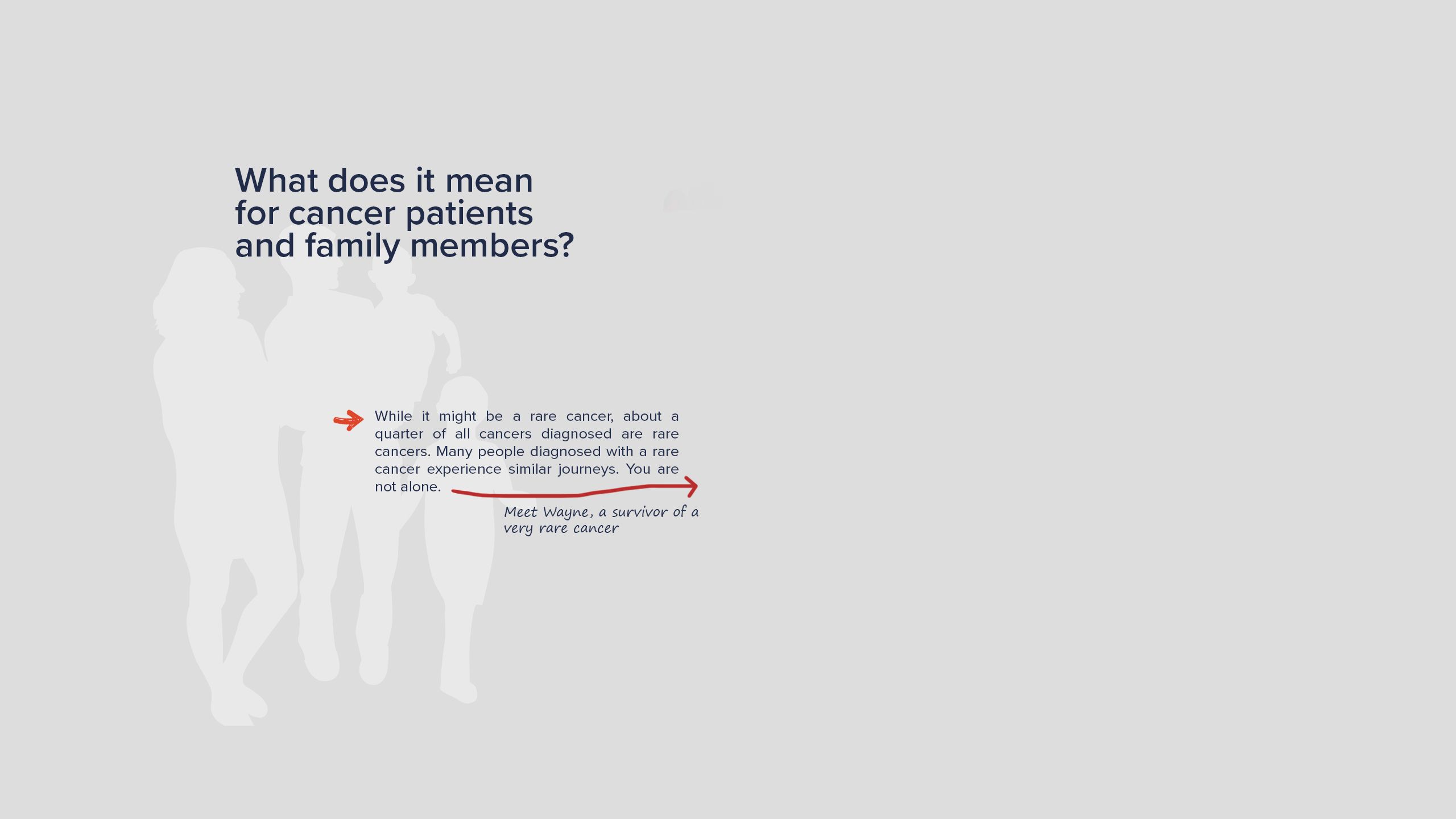

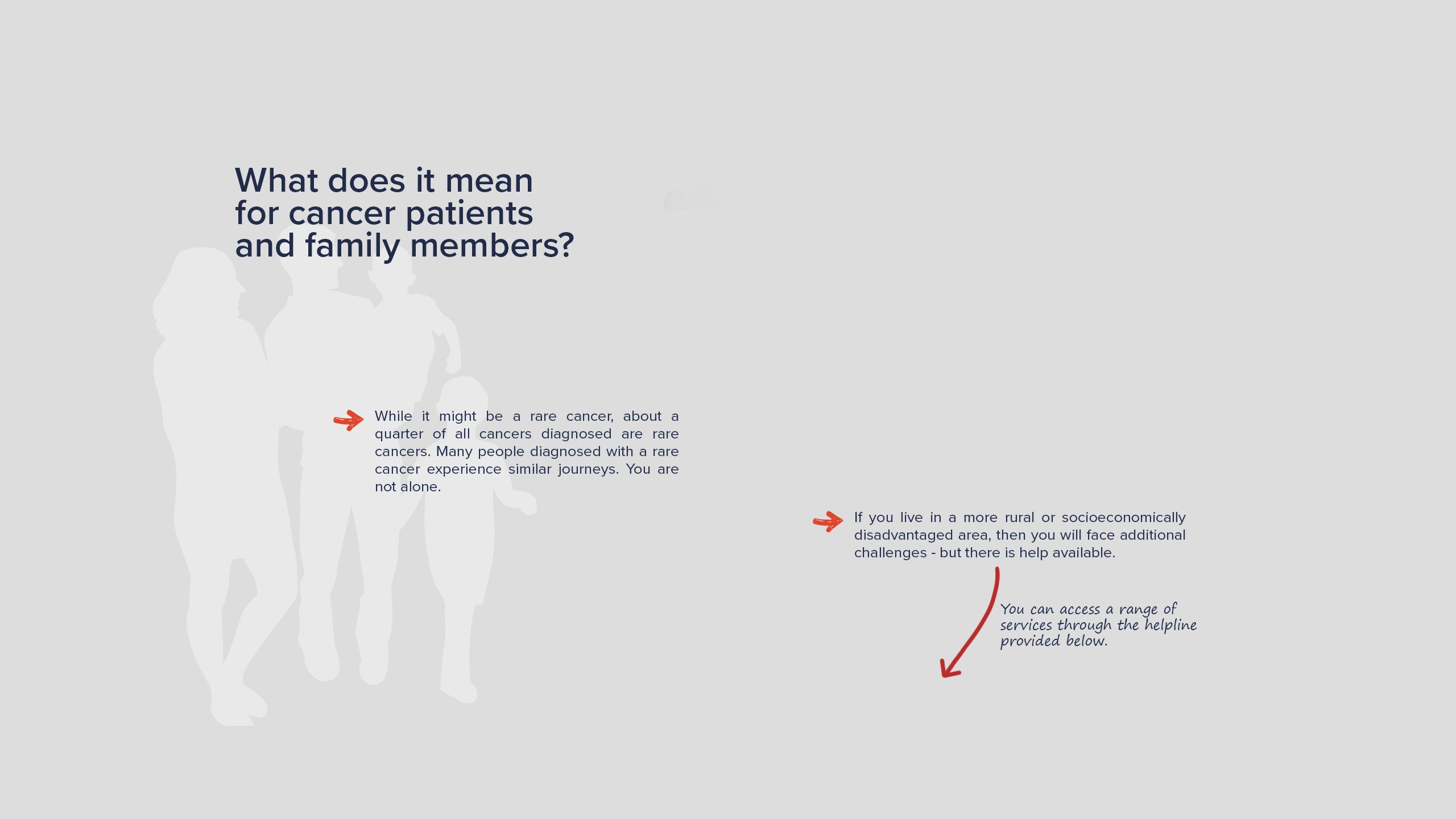
Wayne's journey serves as an inspiration to others who may be facing a similar diagnosis. His story is a testament to the strength and resilience of rare cancer patients.
Wayne was feeling fit and healthy at 50, with half a marathon under his belt while training for a half ironman triathlon when his world was rocked by his diagnosis of duodenal (small bowel) cancer.
It was an incredibly harrowing time for Wayne and his family, with his GP at the time sharing he’d never seen a case of this rare cancer in his 30 years of experience. With a lack of information and many unknowns ahead of him, Wayne turned to his own research where he found Cancer Council’s rare cancer resources. These outlined information for Wayne on his cancer, what he could expect and who to go to for more information. This helped calm his nerves during a very challenging time, but he continues to stress the need for further information, resources and support for rare cancer patients, especially once their treatment has ended. “Travelling away from home and leaving the kids in Cairns added to the stress of the situation but I am grateful that I could access the lifesaving treatment. I know that not everyone is so lucky, especially patients that are in rural and regional communities,” said Wayne. “It’s important the challenges standing in the way of effective diagnosis and treatment for people living in rural and disadvantaged areas is addressed so everyone can have their best chance of surviving like I did.”
Where can you get cancer information and support?
Cancer Council Queensland, along with the Cancer Councils across Australia, provide a free, confidential telephone support service available to everyone in the country to ensure nobody is left navigating cancer alone. Australians impacted by cancer can call this free service to gain information about cancer, as well as emotional and practical support.
Our 13 11 20 hotline can also refer callers to support programs and services in their local area.

How can you contribute to reducing the impact of prostate cancer in Australia?
Imagine receiving a rare cancer diagnosis without access to the specialised care you need. This is the reality for many Australians, particularly those living in remote and disadvantaged areas. But you can help make a difference. By donating to Cancer Council Queensland, you can support services like accommodation lodges and transport to treatment, which can make a significance difference in a person's cancer journey.
Your donation can also contribute to cutting-edge research conducted at Cancer Council Queensland that aims to understand the underlying reasons for prostate cancer. This research will help improve prevention and management strategies and save thousands Australian lives.
So, join us in our mission to bring hope and healing to those affected by prostate cancer. Every donation, no matter the amount, can make a difference in the lives of many Australians.

Patients might experience financial toxicity. Our partner organisation 'Rare Cancers Australia' can help.
Financial toxicity is a major challenge faced by those diagnosed with rare cancers. Cancer patients often have a lot of out-of-pocket expenses for medical tests, medicine, and treatment because rare cancers types do not have the same level of coverage which common cancer types receive. This extra financial burden makes it hard for patients to focus on their health.
Some examples of financial toxicity are not being able to work, using superannuation, or mortgaging or selling the family home. Many people even turn to crowd fundraising and face many indignities to overcome the financial burden.
Rare Cancers Australia can help you with practical, financial and emotional support, assistance with clinical navigation, fundraising and support groups and peer connections.
This research was conducted with the help of the award-winning Australian Cancer Atlas. You can use the atlas for free to visualise the geographical variation in rare cancer types across Australia.
Our free online atlas provides unique insights into the impact of cancer, including rare cancers, across small areas of Australia. Whether you are a researcher, healthcare professional, or simply interested in learning more about cancer, the Australian Cancer Atlas is a valuable tool for understanding how cancer is distributed and its impact across the country.


